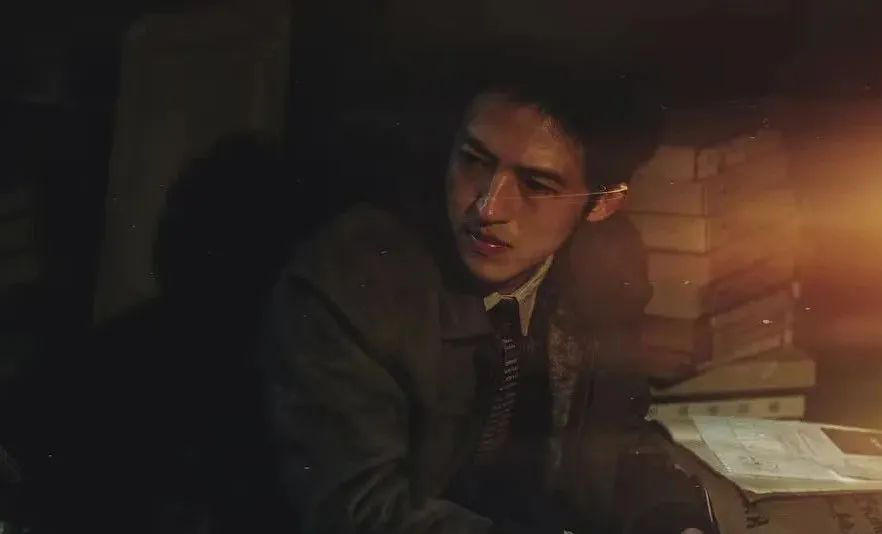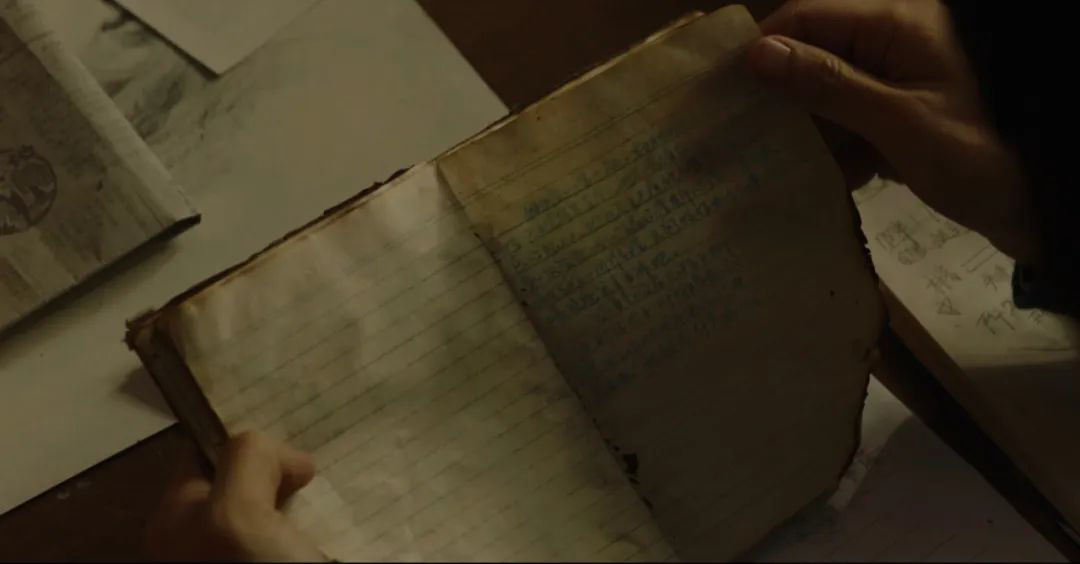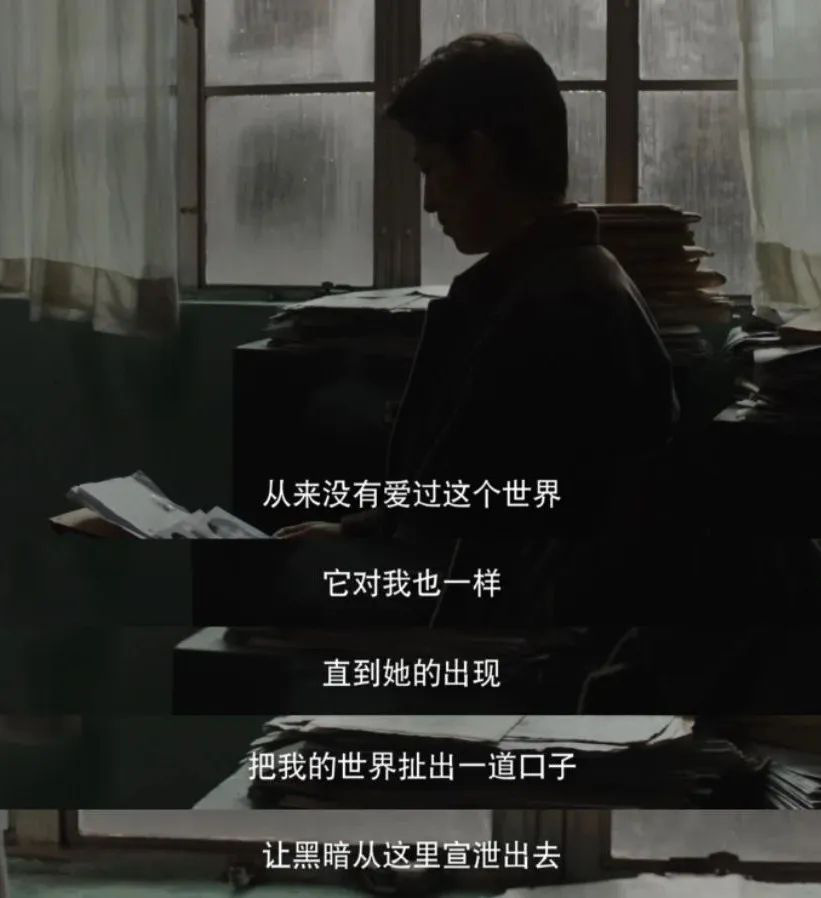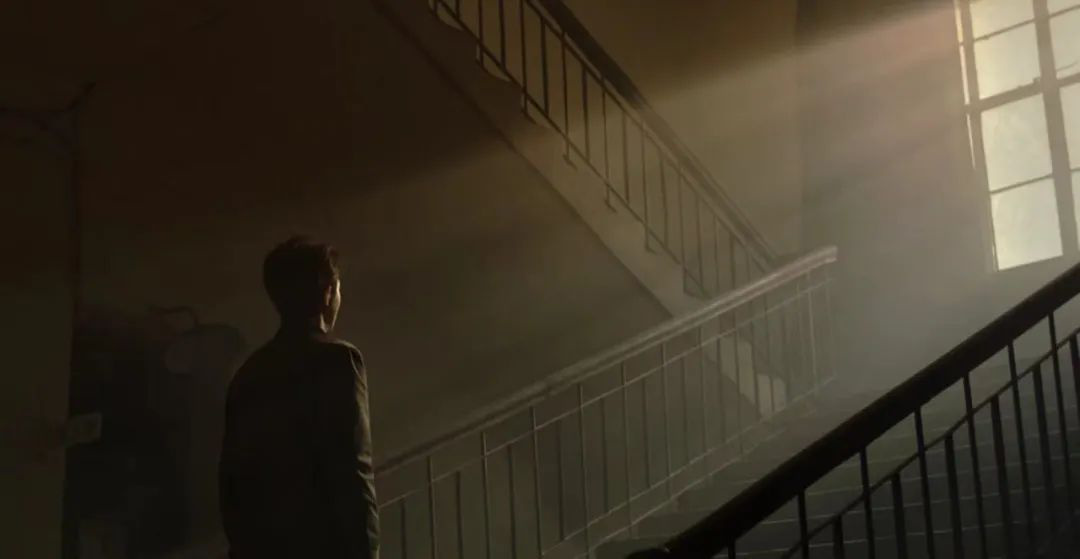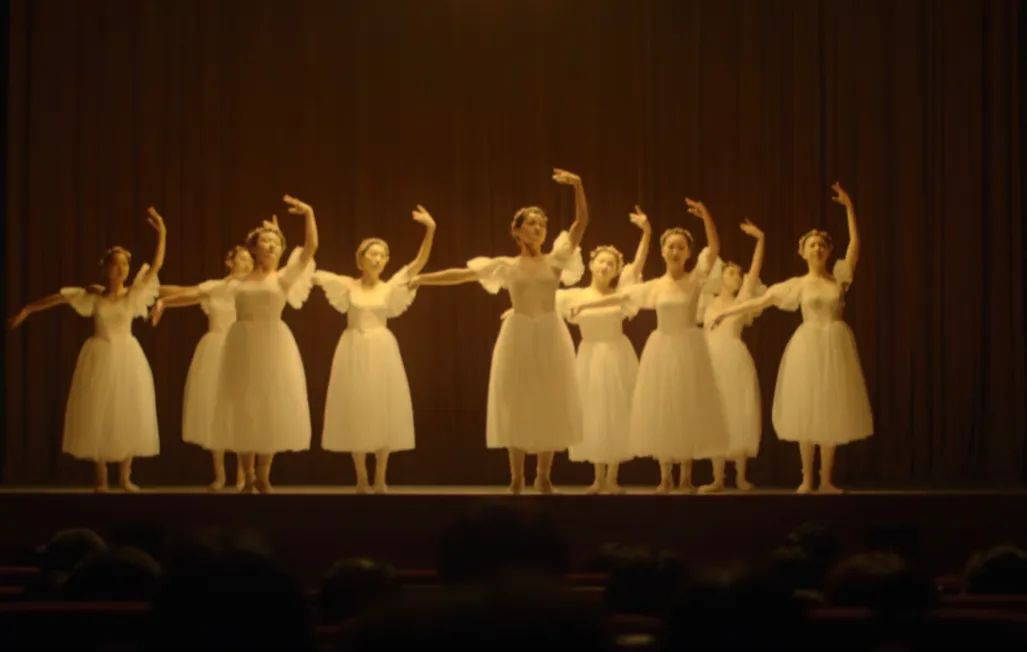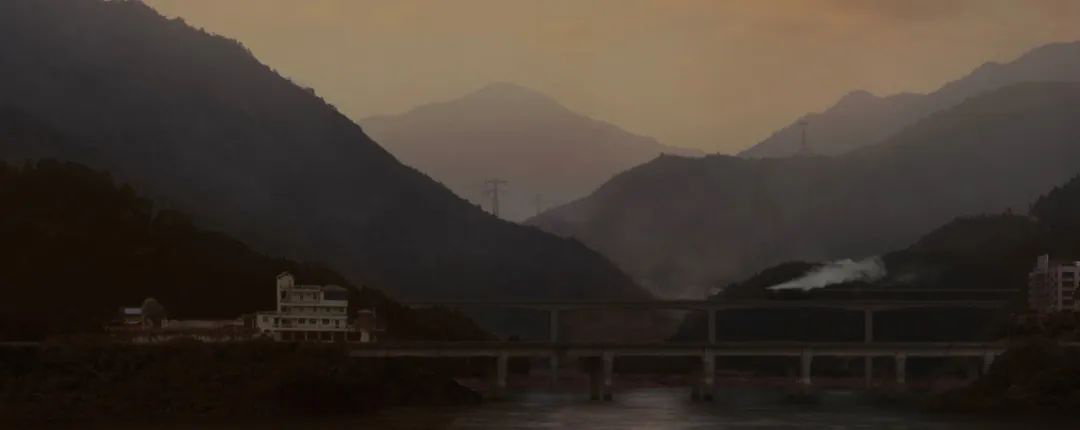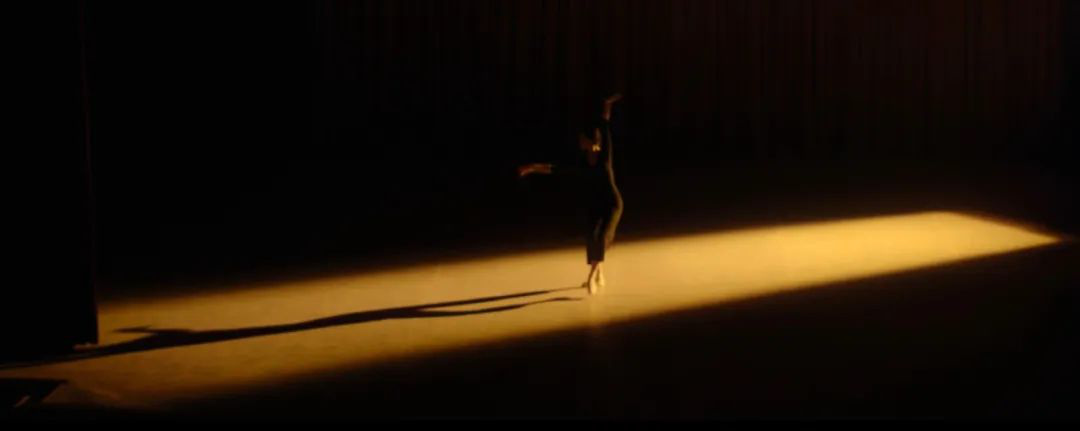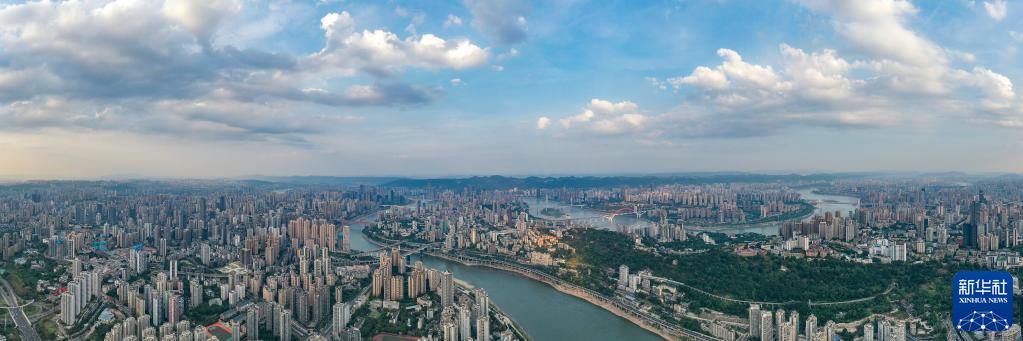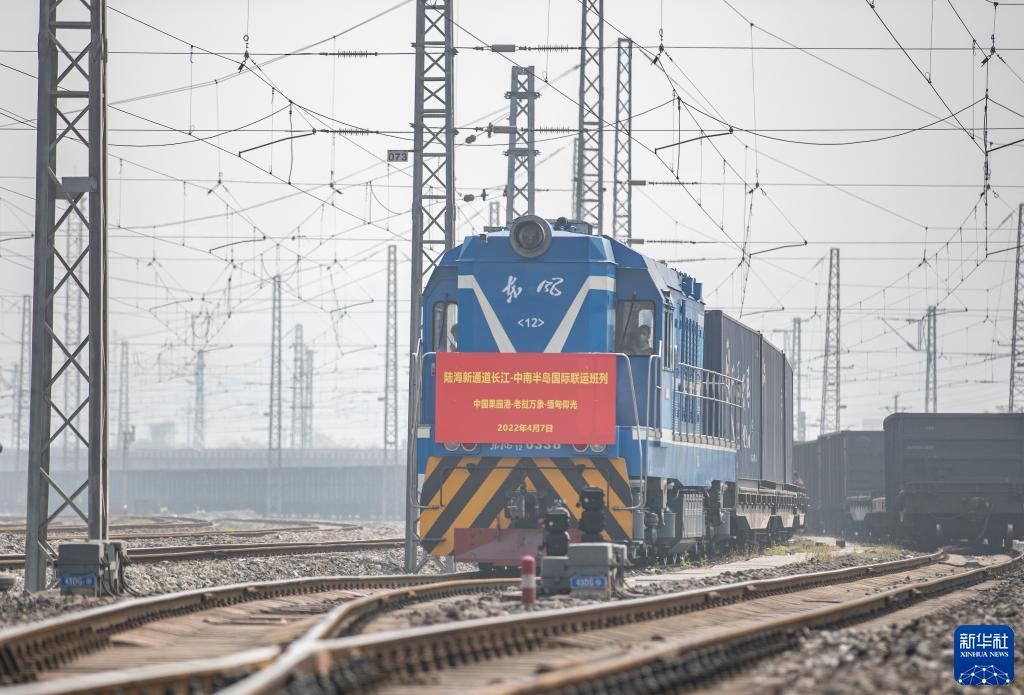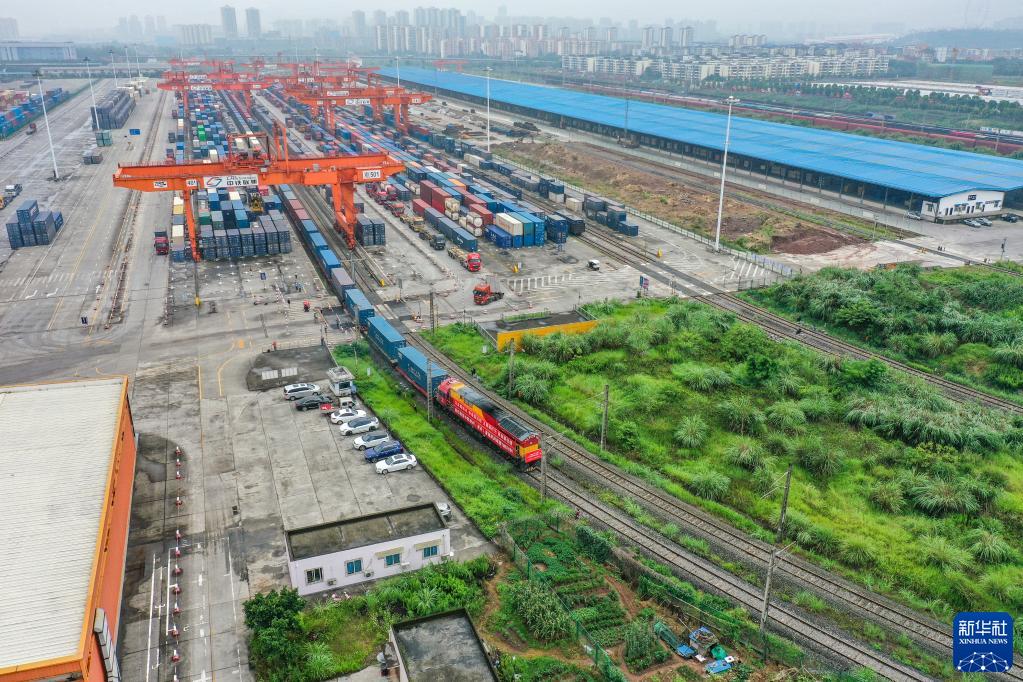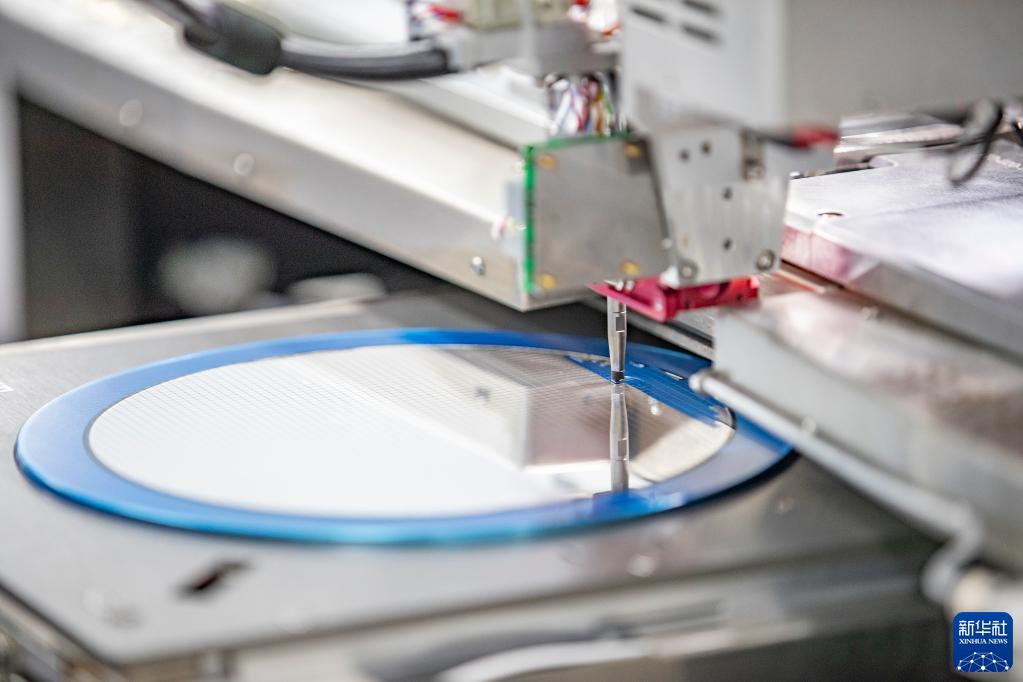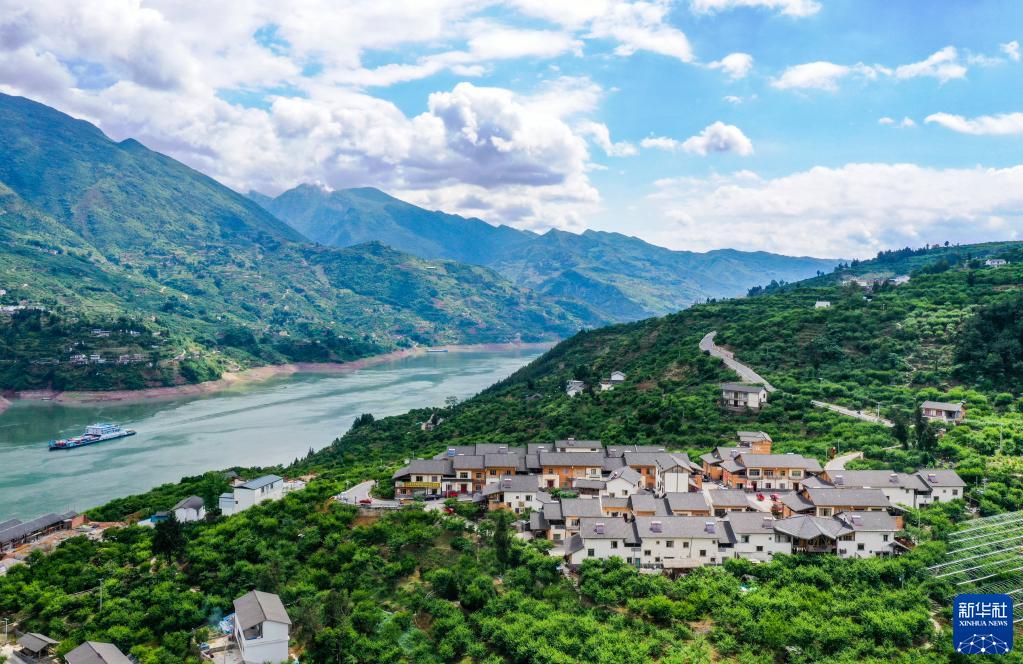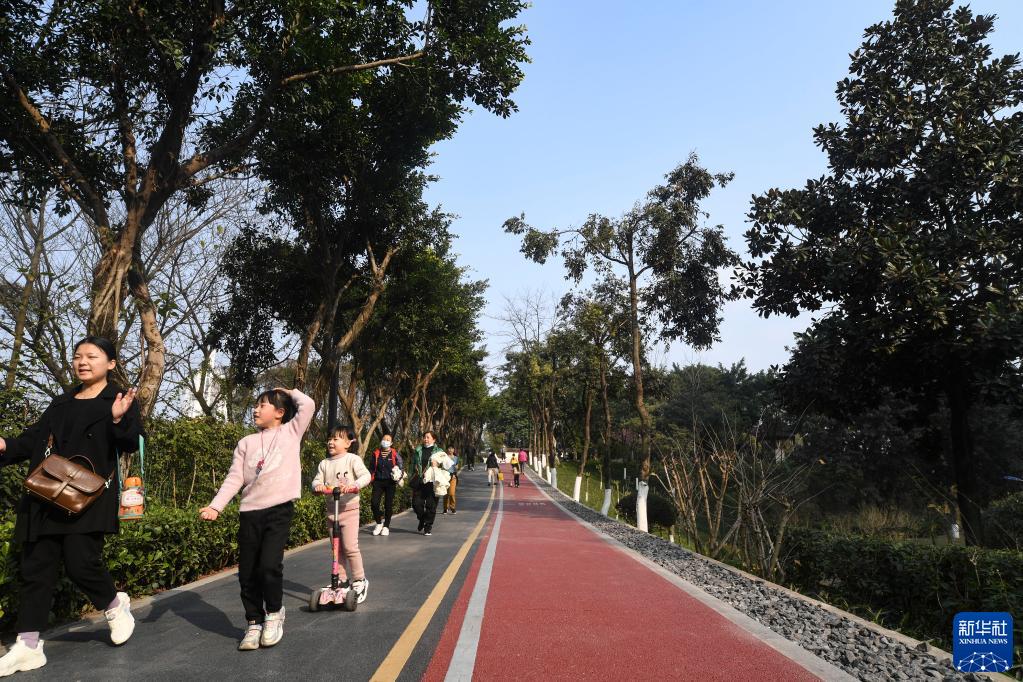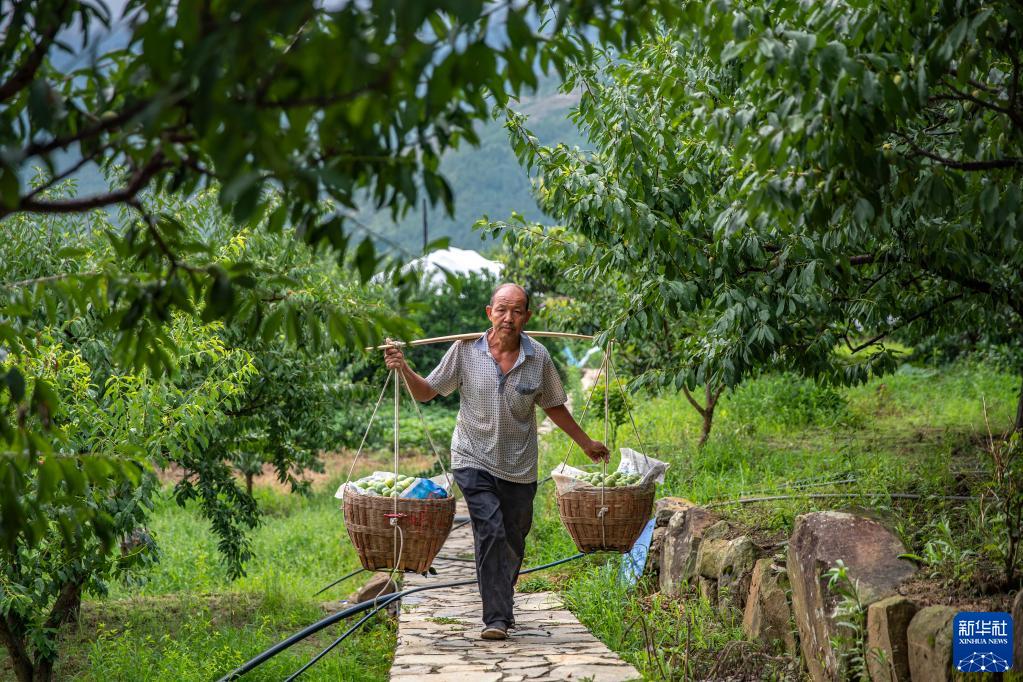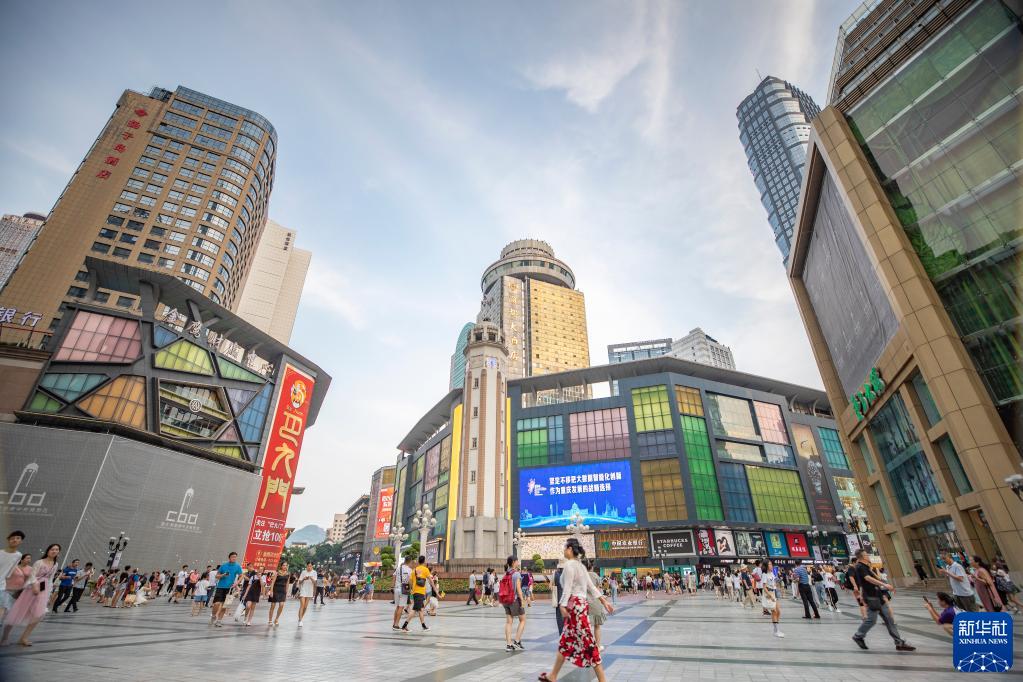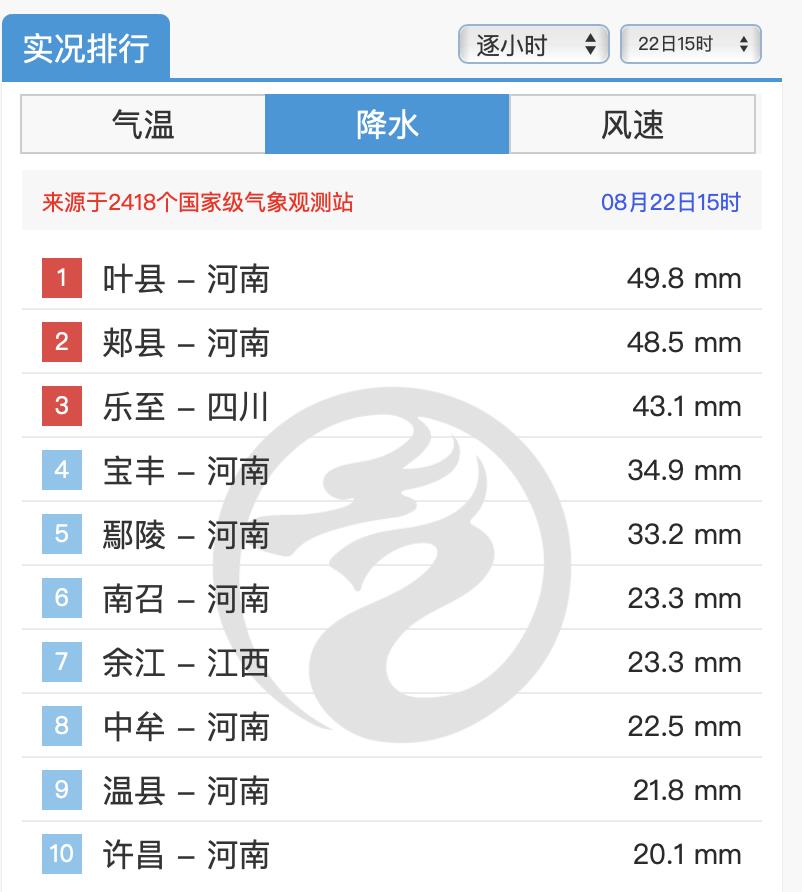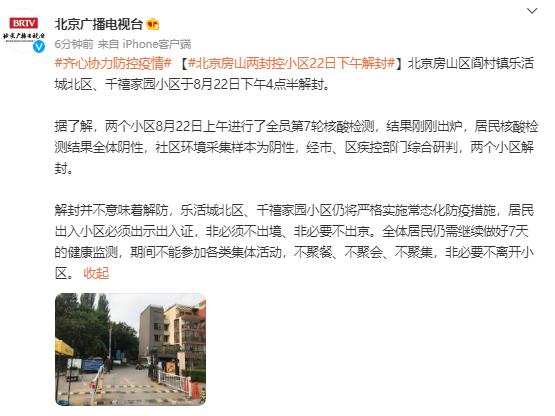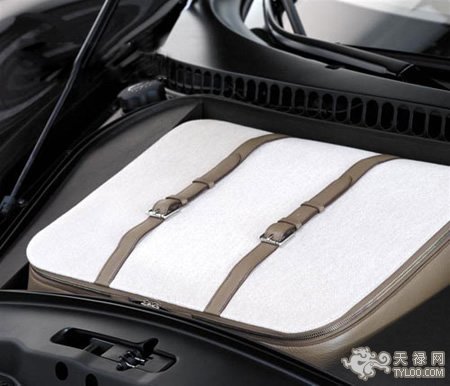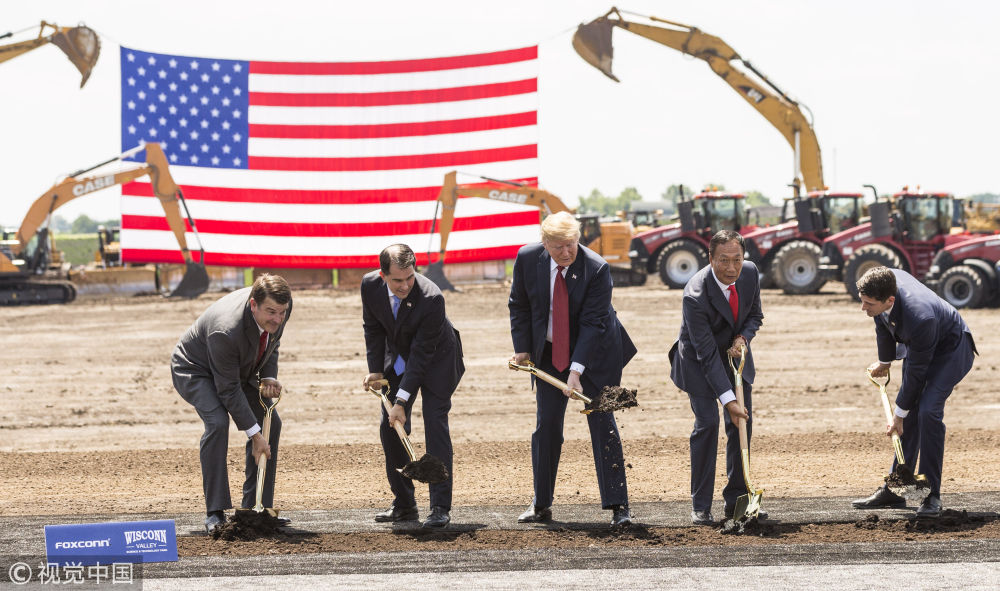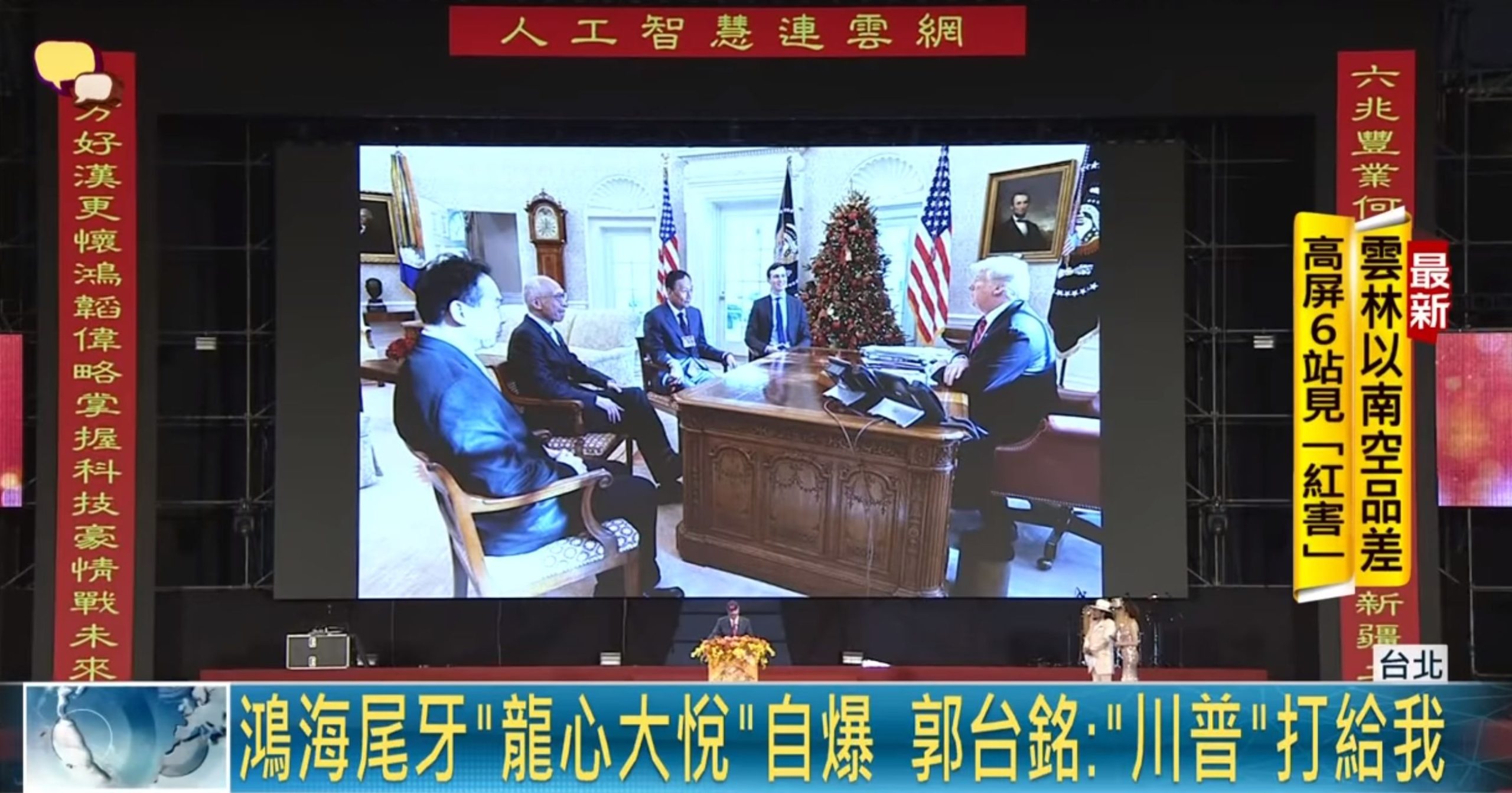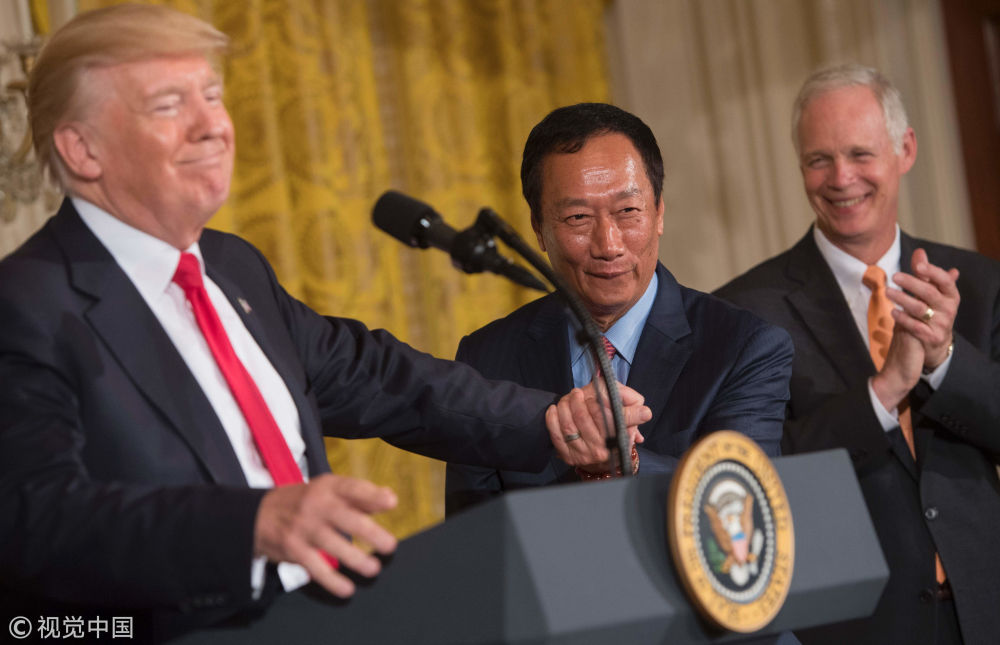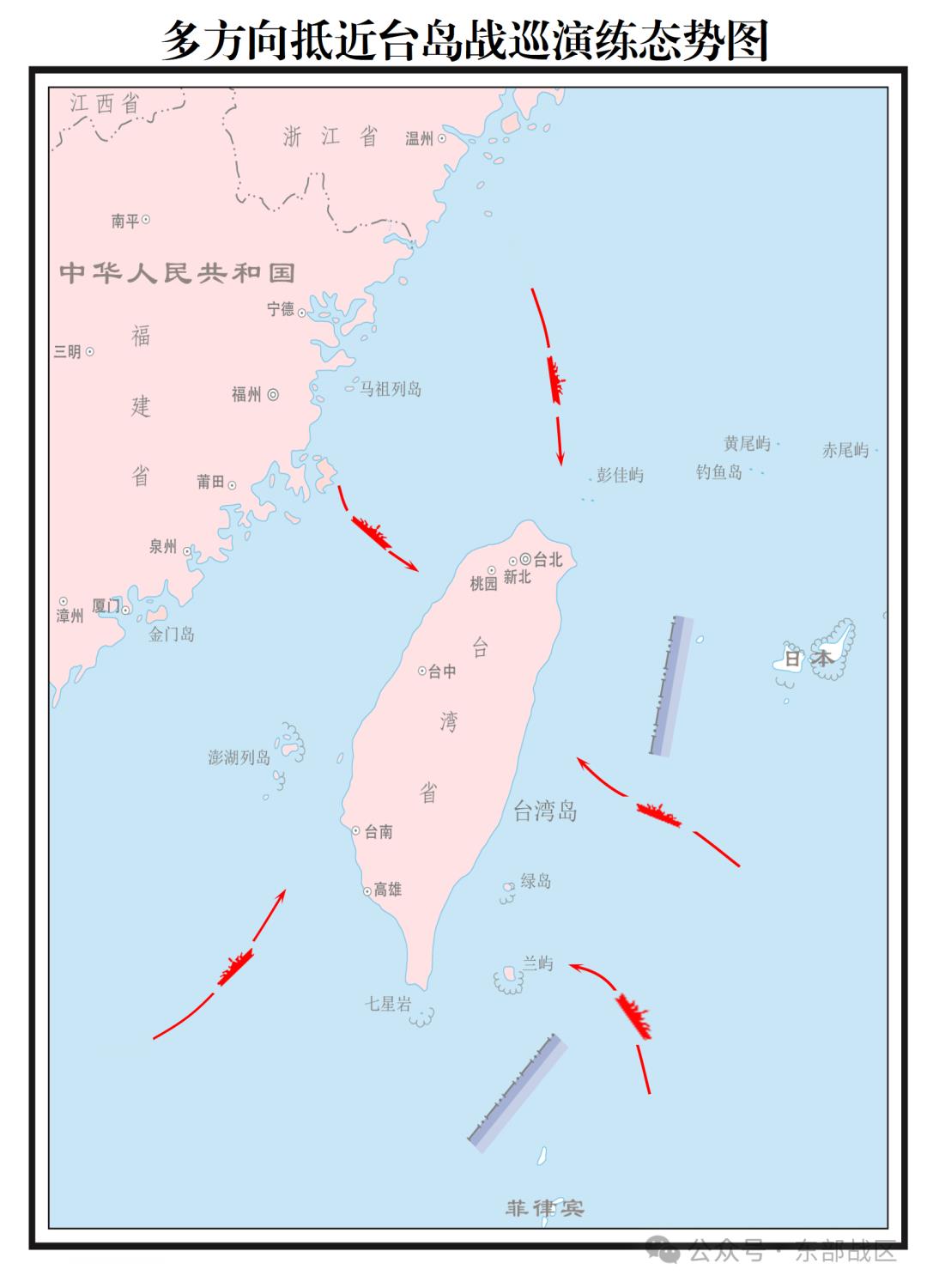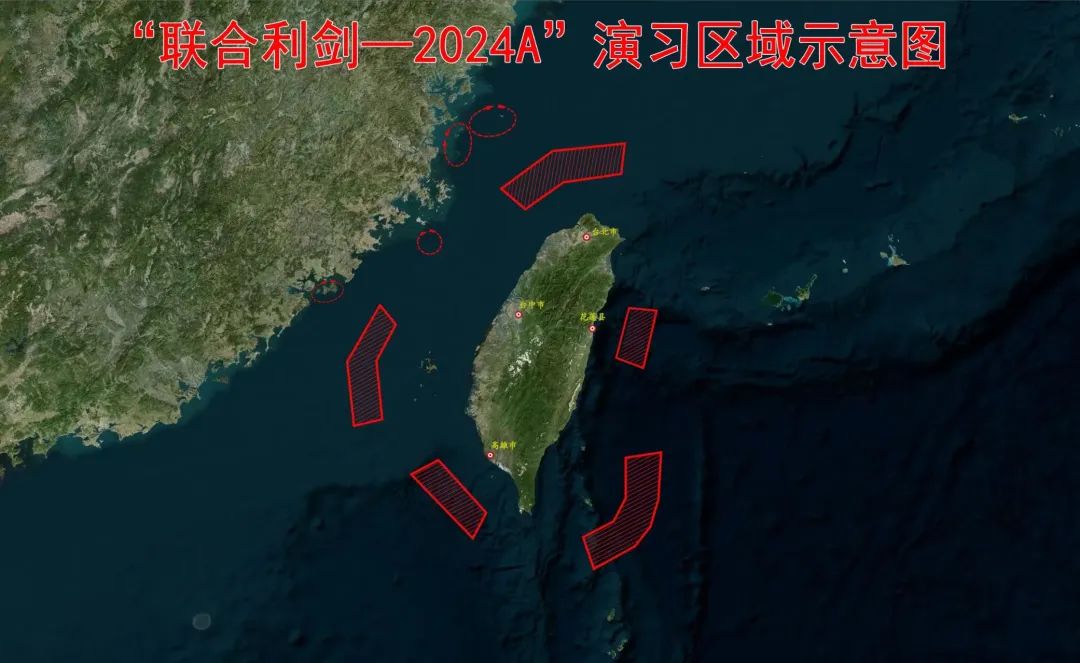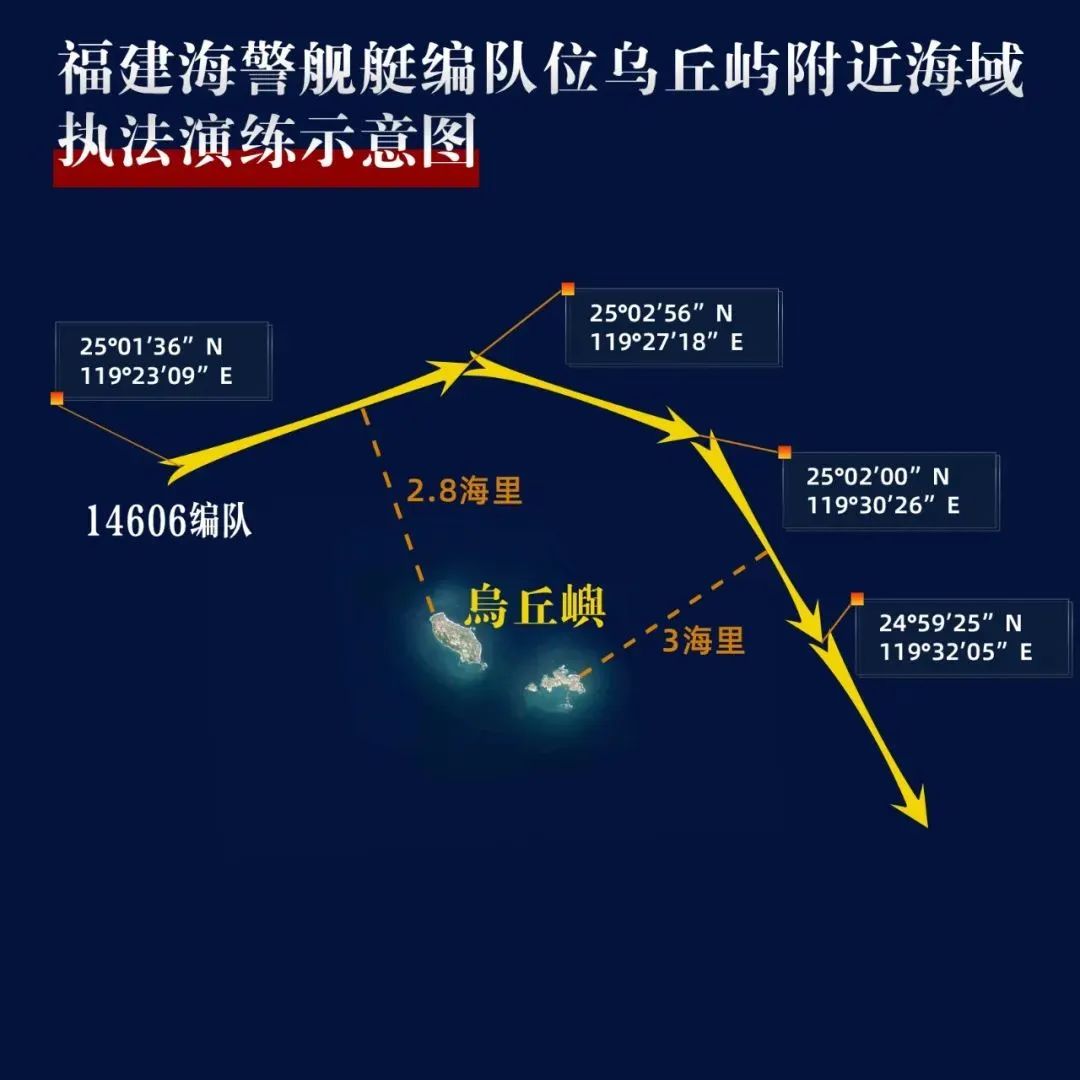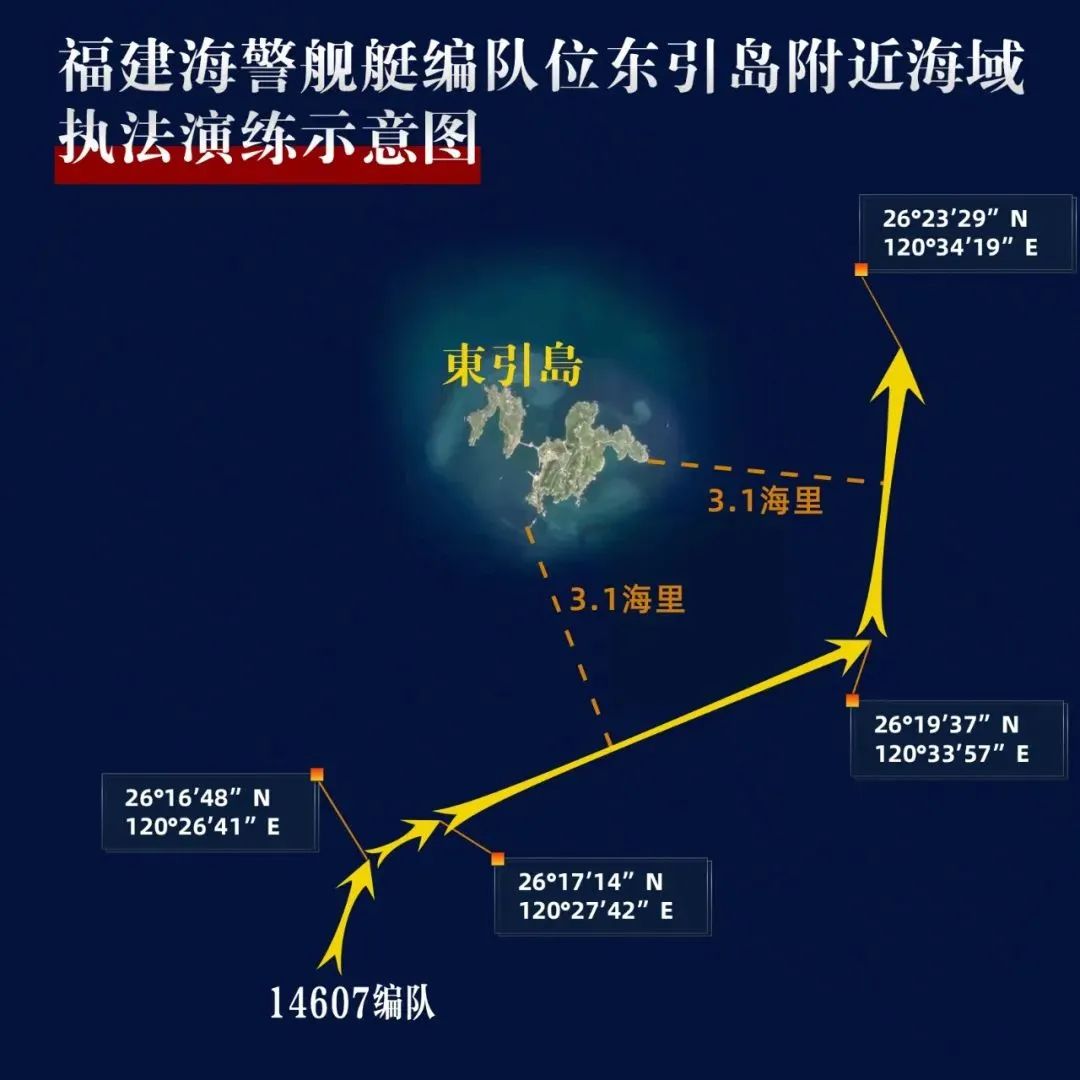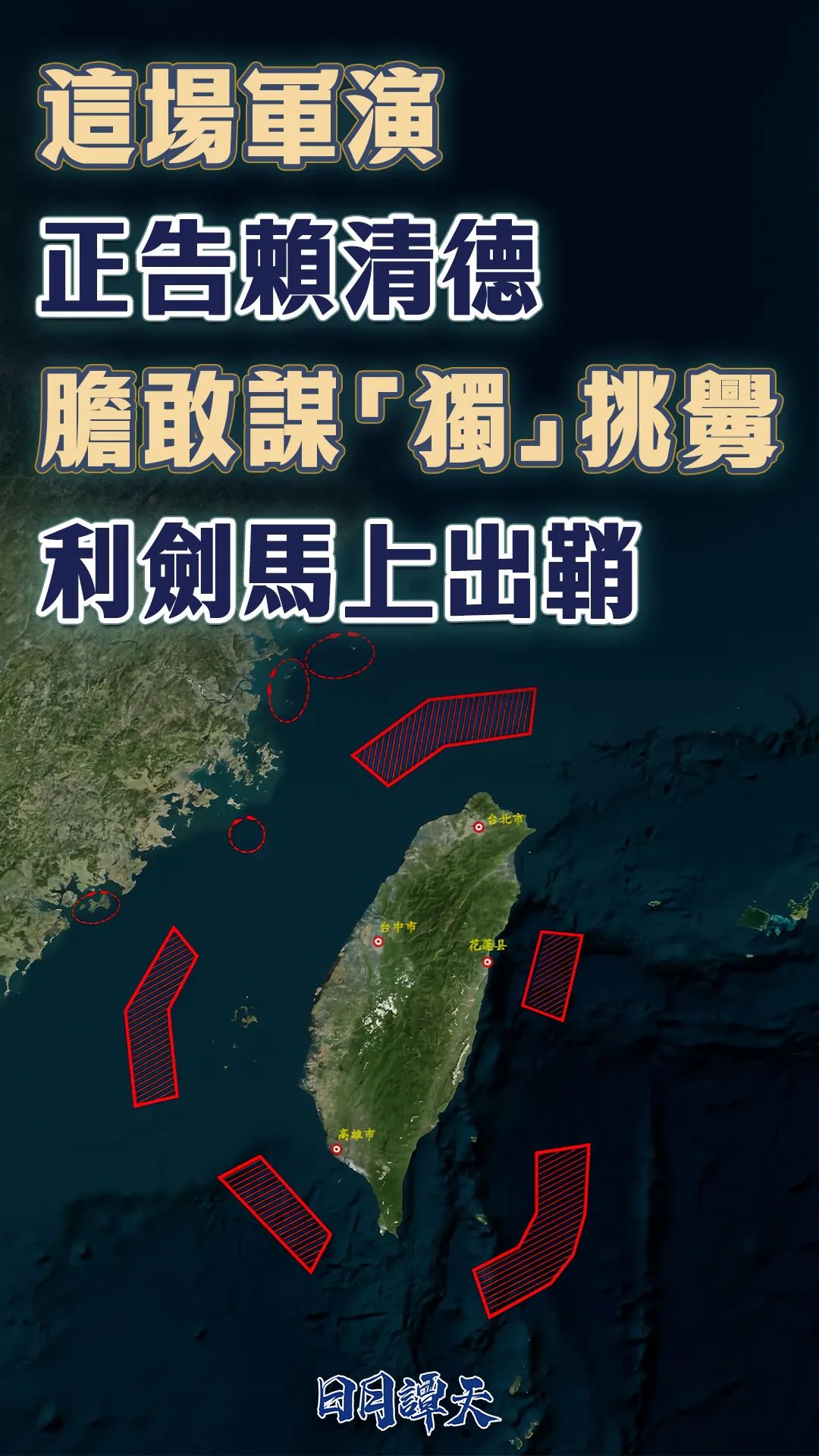The State Council on Printing and Distributing the Thirteenth Five-Year Plan to Promote Ethnic Areas
And the development planning of ethnic minorities with small population
Guo Fa [2016] No.79
People’s governments of all provinces, autonomous regions and municipalities directly under the Central Government, ministries and commissions and institutions directly under the State Council:
The "Thirteenth Five-Year Plan" for Promoting the Development of Ethnic Areas and Minorities with Less Population is hereby printed and distributed to you, please implement it conscientiously.
(This piece is publicly released)
"Thirteenth Five-Year Plan" promotes ethnic areas and
Development planning of ethnic minorities with small population
Catalogue
Foreword
The first chapter faces the development environment.
Section 1 Basic Conditions
Section 2 Main difficulties
Section 3 Opportunities and Challenges
Chapter II General Requirements
The first section guiding ideology
Section 2 Basic Principles
Section III Main Objectives
Chapter III Strive to Win the Fight Against Poverty
Section 1 Ensure that the poverty alleviation goal is achieved as scheduled
Section II Promoting the Development of Special Poverty-stricken Areas by Classification
In the third quarter, mobilize all forces to work together to tackle the problem
Chapter IV Promoting Economic Leap-forward Development
Section 1 Strengthening infrastructure construction
The second quarter to cultivate and expand the characteristic advantage industries
Section III Promoting New Urbanization
Section IV Strengthening Innovation-Driven Development
Chapter v giving priority to ensuring and improving people’s livelihood
Section 1 Improve the level of educational development
Section 2 Vigorously Promote Employment and Entrepreneurship
Section 3 Perfecting the Social Security System
Section IV Strengthening Medical and Health Services
Section 5 Promoting Cultural Prosperity and Development
Chapter VI Promoting the Construction of Ecological Civilization
Section 1 Building a National Ecological Security Barrier
Section II Promoting Resource Conservation, Recycling and Efficient Utilization
Section III Strengthening the Protection of Ecological Environment
Section IV Promoting Environmental Pollution Control
Chapter VII Promoting All-round Open Cooperation
Section 1 Helping the Construction of the Belt and Road Initiative
Section 2 Vigorously Promote the Action of Prospering the Border and Enriching the People
Section III Expanding Opening-up Cooperation along the Border
Section IV Strengthening Inland Opening-up Cooperation
Section 5 Strengthening Foreign Exchanges and Cooperation in Ethnic Work
Chapter VIII Promoting the Accelerated Development of Ethnic Minorities with Less Population
The first section step into a well-off society in an all-round way simultaneously
Section 2 Improving the Basic Conditions for Development
Section III Strengthening the Endogenous Motive Force for Development
Section IV Inheritance and Promotion of National Culture
Section 5 Strengthening the Development of Human Resources
Chapter IX Accelerating the Protection and Development of Villages and Towns with Minority Characteristics
Section 1 Protection and Transformation of Folk Houses with National Characteristics
Section 2 Development of Industries with National Characteristics
Section 3 Improving the Living Environment of Characteristic Villages and Towns
Section IV Inheritance and Development of Traditional Ethnic Cultures in Characteristic Villages and Towns
Chapter X In-depth development of activities to create national unity and progress
Section 1: Promoting exchanges and exchanges among all ethnic groups
Section II Promoting National Unity and Progress and Creating Demonstration Zones (Units)
Section 3 Strengthening the Publicity and Education of National Unity and Progress
The fourth quarter to improve the national unity and progress to create a support system
Chapter XI Innovating the Governance System of Ethnic Affairs
Section 1 Improving the Rule of Law in Ethnic Work
Section 2 Strengthening Ethnic Work in Cities and Scattered Areas
Section III Strengthening the Construction of Talent Team
The fourth quarter to speed up the national affairs management service capacity building
Chapter XII Giving Play to the Supporting Role of Policies
Section 1 Financial Policy
Section II Investment Policy
Section III Financial Policy
Section IV Industrial Policy
Section 5 Land Policy
Section 6 Social Policy
Section 7 Environmental Policy
Section 8 Talent Policy
Section 9 Supporting Policies
Chapter XIII Strengthening the Organization and Implementation of Planning
Section 1 Strengthening organizational leadership
Section 2 Defining the Division of Responsibilities
Section III Strengthening Supervision and Inspection
Foreword
China is a unified multi-ethnic country, with 55 ethnic minorities and 155 ethnic autonomous areas. The population of ethnic minorities accounts for 8.5% of the total population of the country, and the area of ethnic autonomous areas accounts for 64% of the total land area of the country. During the "Thirteenth Five-Year Plan" period, putting accelerating the development of ethnic minorities and ethnic minority areas in a more prominent strategic position is of great significance for filling the shortcomings in the development of ethnic minorities and ethnic minority areas, safeguarding the legitimate rights and interests of ethnic minorities, enhancing the well-being of people of all ethnic groups, enhancing national unity and progress, promoting exchanges and exchanges among ethnic groups, maintaining social harmony and stability, ensuring long-term stability of the country, and realizing the building of a well-off society in an all-round way and the great rejuvenation of the Chinese dream.
This plan is compiled according to the Law of People’s Republic of China (PRC) on Regional Ethnic Autonomy, Opinions of the Central Committee of the Communist Party of China and the State Council on Strengthening and Improving Ethnic Work under the New Situation, and the Outline of the Thirteenth Five-Year Plan for National Economic and Social Development of the People’s Republic of China. It mainly expounds the overall objectives, main tasks and major measures of the state to support the development of ethnic minorities and ethnic minority areas and strengthen ethnic minority work, and is the action program for promoting ethnic minorities and ethnic minority areas to build a well-off society in an all-round way during the Thirteenth Five-Year Plan period.
The first chapter faces the development environment.
Section 1 Basic Conditions
During the "Twelfth Five-Year Plan" period, all localities and departments conscientiously implemented the decision-making arrangements of the CPC Central Committee and the State Council, and made remarkable achievements in the development of ethnic minorities and ethnic minority areas in China. Especially since the 18th National Congress of the Communist Party of China, under the strong leadership of the CPC Central Committee with the Supreme Leader as the core, the comprehensive strength of ethnic minorities and ethnic areas has been greatly improved, and the economy and society have developed in an all-round and coordinated way. Breakthrough progress has been made in infrastructure construction, and people’s production and living conditions have improved significantly. With the rapid development of industries with distinctive advantages, the self-development ability is increasingly enhanced. The poverty alleviation has achieved remarkable results, and the income of farmers and herdsmen has continued to increase. Great progress has been made in social undertakings and the level of basic public services has been steadily improved. The construction of ecological civilization has achieved remarkable results, and the environmental quality has been further improved. New urbanization continued to advance, and villages and towns with minority characteristics were effectively protected and developed. The cultural undertakings of ethnic minorities have prospered and developed, and the spiritual life of the people of all ethnic groups has become richer. All-round open cooperation has been deepened and broadened, and international and domestic competitive advantages have become increasingly prominent. National unity has been continuously consolidated and ethnic relations have become more harmonious. The ability to manage ethnic affairs according to law has been continuously improved, and the cohesion and centripetal force of all ethnic groups have been continuously enhanced. On the whole, ethnic minorities and ethnic areas have the basic conditions for building a well-off society in an all-round way.
Section 2 Main difficulties
Due to historical, natural and geographical reasons, the development of ethnic minorities and ethnic areas still faces some outstanding problems and special difficulties. The overall economic and social development lags behind, the supply-side structural reform task is arduous, the level of industrial development is low, and it is difficult to convert old and new kinetic energy. The development of urban and rural areas is unbalanced, the supply of basic public services is insufficient, infrastructure construction is in debt, resources and environment are constrained, innovation and development ability is weak, and the level of opening up to the outside world is not high. The overall quality of the population in ethnic minorities and ethnic minority areas needs to be improved, the inheritance and development of ethnic minority traditional culture needs to be strengthened urgently, the poverty problem is still grim, the task of maintaining social harmony and stability is arduous, and there is still a long way to go to narrow the development gap with the whole country. To solve multiple problems and difficulties, we must speed up the development of ethnic minorities and ethnic areas.
Section 3 Opportunities and Challenges
During the "Thirteenth Five-Year Plan" period, China’s economic development has entered a new normal, the international and domestic development environment has become more complicated, and the development of ethnic minorities and ethnic areas has shown new characteristics and faced new opportunities and challenges. On the one hand, the world situation is undergoing profound changes, the multipolarization of geopolitical relations is developing in depth, the unstable, uncertain and unbalanced factors in the world are increasing significantly, and the international risks and challenges facing China’s development are increasing. At the same time, the new industrialization, informationization, urbanization and agricultural modernization have been further promoted, and the reform has entered the deep water area. The downward pressure on China’s economy has increased, and the tasks of stabilizing growth, restructuring, benefiting people’s livelihood and preventing risks have become increasingly heavy. The pressure on ethnic areas to coordinate all aspects, bear various risks and resolve social contradictions has increased, and they are faced with the dual tasks of getting rid of poverty and achieving a well-off society in an all-round way, the dual responsibilities of developing the economy and protecting the environment, and the dual pressures of accelerating development and maintaining unity and stability. On the other hand, as China enters the decisive stage of building a well-off society in an all-round way, the construction of the "Belt and Road" has been accelerated, regional coordinated and orderly development has been carried out, poverty alleviation has been launched in an all-round way, and the well-off campaign in ethnic areas has been implemented in depth. The state’s all-round support for ethnic areas, border areas and poverty-stricken areas has been increasing, and ethnic minorities and ethnic areas are facing rare opportunities for development. To accelerate the development of ethnic minorities and ethnic areas during the 13th Five-Year Plan period, we must seize opportunities, meet challenges and ensure the goal of building a well-off society in an all-round way as scheduled.
Chapter II General Requirements
The first section guiding ideology
Hold high the great banner of Socialism with Chinese characteristics, under the guidance of Marxism–Leninism, Mao Zedong Thought, Deng Xiaoping Theory, Theory of Three Represents and Scientific Outlook on Development, fully implement the spirit of the 18th CPC National Congress and the Third, Fourth, Fifth and Sixth Plenary Sessions of the 18th CPC Central Committee, thoroughly implement the spirit of the series of important speeches by the Supreme Leader General Secretary and the new ideas, new ideas and new strategies for governing the country, and closely focus on the overall layout of "five in one" and the strategic layout of "four comprehensiveness". Fully implement the spirit of the Central Conference on Ethnic Work and the general idea of ethnic work under the new situation, firmly grasp the theme of ethnic work of all ethnic groups working together for common prosperity and development, unswervingly follow the correct path of solving ethnic problems with China characteristics, adhere to the comprehensive implementation of the party’s ethnic policy, adhere to and improve the system of regional ethnic autonomy, adhere to the exchanges and integration of all ethnic groups, and adhere to the development concept of innovation, coordination, green, openness and sharing. Always put the accelerated development of ethnic minorities and ethnic areas in a more prominent strategic position, with the aim of promoting national unity, social harmony and people’s happiness, focusing on enhancing self-development ability, improving public service level and improving people’s livelihood, ensuring the improvement of institutional mechanisms and supporting policies, paying more attention to the combination of ethnic factors and regional factors, developing the economy and improving people’s livelihood, releasing policy motivation and stimulating endogenous motivation, and promoting reform and innovation and opening up to the outside world.Efforts will be made to solve the outstanding shortcomings and weak links that restrict the development of ethnic minorities and ethnic minority areas, to promote the development of ethnic minority undertakings, to consolidate and develop socialist ethnic relations of equality, unity, mutual assistance and harmony, to improve the ability to manage ethnic affairs according to law, and to ensure that ethnic minorities and ethnic minority areas will enter an all-round well-off society with the people of the whole country by 2020.
Section 2 Basic Principles
— — Insist on accelerating development and narrowing the gap. Focusing on the strategic goal of building a well-off society in an all-round way, we should make overall consideration of the current and long-term coordinated development between urban and rural areas, highlight the key points and difficulties, make every effort to promote supply-side structural reform, vigorously promote infrastructure construction, strive to create new advantages in industrial development, continuously enhance self-development capabilities, promote the sustained and healthy development of ethnic minorities and ethnic minority areas, and gradually narrow the development gap with other regions.
— — Adhere to people-oriented and improve people’s livelihood. Adhere to the people as the center, fully mobilize the enthusiasm, initiative and creativity of the people, always take improving people’s livelihood, rallying people’s hearts, enhancing people’s well-being and promoting people’s all-round development as the starting point and end result of all work, strive to achieve, safeguard and develop the fundamental interests of the people, effectively enhance the sense of gain and happiness of the people of all ethnic groups, and let ethnic minorities and ethnic areas share the fruits of reform and development.
— — Adhere to green development and protect the ecology. We will fully implement the basic national policy of saving resources and protecting the environment, correctly handle the relationship between economic development and ecological environmental protection, further promote the construction of ecological civilization, vigorously develop the green economy, promote the green transformation of the economy, promote the harmonious development between man and nature, and push ethnic minorities and ethnic minority areas to embark on a green development road of production development, affluent life and beautiful ecology.
— — Adhere to local conditions and classified guidance. Establish the development concept of innovation, coordination, green, openness and sharing, base on the resource and environmental conditions and the traditional cultural characteristics of ethnic minority areas, adjust measures to local conditions, classify policies, highlight characteristics, scientifically determine the development model and implementation path, strengthen the work guidance and policy support for the weak links in the development of ethnic minority areas, and ensure that the task of poverty alleviation can be achieved as scheduled.
— — Adhere to reform and innovation and expand opening up. Give full play to the decisive role of the market in the allocation of resources, give better play to the role of the government, deepen the reform in key areas and key links, encourage pioneering, innovate institutional mechanisms, release the vitality of reform, expand open cooperation in all directions, and strive to build a new pattern of opening up to the outside world in ethnic areas.
— — Adhere to state support and self-reliance. Give full play to the leading core role of Party committees at all levels in taking the overall situation into account and coordinating all parties, seize the great opportunity of the state to promote regional coordinated development, adhere to the combination of increasing central support and stimulating local endogenous power, strengthen top-level design, improve policy system, increase investment, plant development advantages, accelerate the pace of development, improve the level of development, and promote the leap-forward economic and social development of ethnic minorities and ethnic minority areas.
— — Adhere to national unity and common development. Give full play to the superiority of the socialist system, regard national unity as the lifeline of the people of all ethnic groups, promote the interdependence of all ethnic groups, brotherly love and mutual help, promote unity and stability through prosperity and development, ensure prosperity and development through unity and stability, promote exchanges and exchanges among all ethnic groups, and explore a road of unity and development with China characteristics, in line with the characteristics of ethnic regions and reflecting the wishes of all ethnic groups.
Section III Main Objectives
In accordance with the requirements of ensuring to build a well-off society in an all-round way in synchronization with the whole country by 2020, the main objectives of the development of ethnic minorities and ethnic minority areas during the "Thirteenth Five-Year Plan" period are:
— — Sustained and rapid economic development. The growth rate of economic development is higher than the national average. By 2020, the regional GDP and the per capita income of urban and rural residents will double compared with 2010, and the gap with the whole country will be significantly narrowed. The development of agricultural and pastoral areas has been accelerated, poverty alleviation has achieved tangible results, infrastructure has been improved, industrial structure has been continuously optimized, the level of urbanization has been greatly improved, the level of opening up to the outside world has been significantly improved, and the comprehensive economic strength has been significantly enhanced.
— — Social undertakings have been steadily improved. The level of equalization of basic public services has been significantly improved, the allocation of resources has been more reasonable, the gap between urban and rural areas has been significantly narrowed, and the indicators in major areas have reached or approached the national average. Urban and rural residents are more fully employed, the number of years of education of the working-age population has been significantly improved, social security has been fully covered, basic medical and health services have been enjoyed by everyone, and the overall quality of the people and the degree of social civilization have been comprehensively improved.
— — National culture prospered and developed. The excellent traditional culture of ethnic minorities has been inherited and promoted, cultural undertakings have been accelerated, the public cultural service system has been basically completed, cultural infrastructure has been more complete, cultural products have been increasingly enriched, cultural industries have continued to grow, cultural development achievements have benefited people of all ethnic groups, cultural activities with ethnic minority characteristics have been widely carried out, and the construction of spiritual homes shared by all ethnic groups has achieved remarkable results.
— — The ecological environment has improved significantly. The national ecological security barrier has basically taken shape, the construction of main functional areas has achieved remarkable results, the ecological environment protection ability has been significantly improved, the ecological protection compensation mechanism has been gradually established and improved, the resource recycling system has been initially established, the environmental governance ability has been continuously enhanced, the urban and rural living environment has become more beautiful, and the construction of a resource-saving and environment-friendly society has been steadily promoted.
— — National unity has been further consolidated. The awareness of the Chinese nation’s community is deeply rooted in people’s hearts, the whole society’s idea of "three inseparable" (Han people can’t do without ethnic minorities, ethnic minorities can’t do without Han people, and ethnic minorities can’t do without each other) has been comprehensively strengthened, the "five identities" (identity with the great motherland, the Chinese nation, Chinese culture, the Communist Party of China (CPC) and Socialism with Chinese characteristics road) of all ethnic groups have been continuously strengthened, ethnic theory and policies have been innovated and developed, and laws and regulations on ethnic work have been improved day by day. The modernization level of ethnic affairs governance has been significantly improved, the embedded social structure and community environment have been gradually established, the construction of national unity and progress demonstration zones has been further promoted, all ethnic groups have lived in harmony, worked together and developed harmoniously, and socialist ethnic relations have been further consolidated.
|
special columnoneMain indicators of economic and social development in ethnic autonomous areas during the 13th Five-Year Plan period
|
|
index
|
2015year
|
2020year
|
Average annual growth rate [cumulative]
|
attribute
|
|
economic development
|
|
(one) regional GDP (trillion yuan)
|
six.65
|
nine.eight
|
>8%
|
Anticipation
|
|
(2) Full-time labor productivity (ten thousand yuan)/People)
|
six.48
|
nine.one
|
>7%
|
Anticipation
|
|
coordinated development
|
|
(three) Industrial added value (trillion yuan)
|
2.62
|
>three.eight
|
>seven.5%
|
Anticipation
|
|
(four) Proportion of added value of service industry (%)
|
forty-two.26
|
47
|
〔four.74〕
|
Anticipation
|
|
(five) urbanization rate (%)
|
47.09
|
54.2
|
〔seven.11〕
|
Anticipation
|
|
shared development
|
|
(six) Poverty alleviation in rural areas (10,000 people)
|
—
|
—
|
〔1805〕
|
binding character
|
|
(seven) per capita disposable income growth of residents (%)
|
—
|
—
|
>9%
|
Anticipation
|
|
(eight) Average years of education of working-age population (years)
|
nine.01
|
10.three
|
〔one.29〕
|
binding character
|
|
(nine) Number of new jobs in cities and towns (10,000)
|
—
|
—
|
〔>500〕
|
Anticipation
|
|
(10) basic old-age insurance participation rate (%)
|
81.seven
|
90
|
〔eight.three〕
|
Anticipation
|
|
(11Life expectancy per capita (years)
|
—
|
—
|
〔one〕
|
Anticipation
|
|
Green development
|
|
(twelve) Cultivated land (100 million mu)
|
three.19
|
three.19
|
〔0〕
|
binding character
|
|
(13) unitGDPReduced energy consumption (%)
|
—
|
—
|
〔13〕
|
binding character
|
|
(14) forest coverage (%)
|
17.eighty-five
|
19.eight
|
〔one.95〕
|
binding character
|
|
open development
|
|
(15) Total import and export volume (USD 100 million)
|
1201
|
>2114.four
|
>14%
|
Anticipation
|
|
(16Proportion of import and export volume of border trade (%)
|
33.four
|
43.six
|
〔10.2〕
|
Anticipation
|
|
(17) Actual utilization of foreign capital (US$ 100 million)
|
109.79
|
>151.one
|
>six.6%
|
Anticipation
|
|
innovative development
|
|
(18) research and experimental development funding intensity (%)
|
0.74
|
one.seven
|
〔0.96〕
|
Anticipation
|
|
(19) contribution rate of scientific and technological progress (%)
|
45.eight
|
54
|
〔eight.2〕
|
Anticipation
|
|
(twenty) internet
popularizing rate
|
Fixed broadband household penetration rate (%)
|
36
|
60
|
〔24〕
|
Anticipation
|
|
Mobile broadband user penetration rate (%)
|
50
|
79
|
〔29〕
|
|
Unity and development
|
|
(21) Mobility rate of ethnic minorities (%)
|
15.09
|
16.nine
|
〔one.81〕
|
Anticipation
|
|
(22National education base for national unity and progress (units)
|
57
|
>117
|
〔>60〕
|
binding character
|
|
(23) National Ethnic Group
Knot progress creation
|
Demonstration area (units)
|
0
|
>1000
|
〔>1000〕
|
binding character
|
|
Demonstration unit (unit)
|
135
|
>1135
|
〔>1000〕
|
|
Note: ① Gross regional product, total labor productivity and industrial added value are calculated at comparable prices, while absolute figures are calculated at.2015Annual constant price calculation.
②〔] isfiveAnnual cumulative number. ③ The number of new jobs in cities and towns only includesfiveAn autonomous region.
|
| |
|
|
|
|
|
|
Chapter III Strive to Win the Fight Against Poverty
Section 1 Ensure that the poverty alleviation goal is achieved as scheduled
Due to historical, natural and geographical reasons, poverty in ethnic minorities and ethnic minority areas is complicated, with special manifestations, deep poverty and heavy task of getting rid of poverty. We must firmly establish the concept of scientific and accurate poverty alleviation, regard poverty alleviation as the top priority for development and the first livelihood project, adopt unconventional hard measures, improve the poverty alleviation mechanism, and ensure that ethnic minorities and ethnic areas can get rid of poverty as scheduled. In accordance with the requirements of developing a batch of poverty alleviation through production, relocating a batch of poverty alleviation through relocation, ecological compensation, education and social security, we will adhere to the basic strategy of precise poverty alleviation and poverty alleviation, focusing on poverty-stricken areas in ethnic autonomous areas, border areas and ethnic minority areas with less population, speeding up the solution of the development bottleneck of ethnic minorities and ethnic minority areas, and steadily realizing the poverty-stricken people in rural areas. Compulsory education, basic medical care and housing security are guaranteed. Under the current standards, all rural poor people are lifted out of poverty, and all poverty-stricken counties are stripped of their hats, so as to solve the overall regional poverty and ensure that ethnic minorities and ethnic minority areas enter a well-off society in an all-round way simultaneously with the whole country. (The the State Council Poverty Alleviation Office, the Ministry of Finance, the National Development and Reform Commission, the Ministry of Environmental Protection, the Ministry of Land and Resources, the Ministry of Education, the Ministry of Human Resources and Social Security, the State Ethnic Affairs Commission, the National Health and Family Planning Commission, and the Ministry of Housing and Urban-Rural Development are respectively responsible according to their division of responsibilities, the same below).
Section II Promoting the Development of Special Poverty-stricken Areas by Classification
Adhere to the overall planning of ethnic groups and regions, adjust measures to local conditions, and make classified policies. For the poverty-stricken people living in ethnic areas with poor living conditions and fragile ecological environment, "one side of the soil and water can’t support one side", we will actively implement ex situ poverty alleviation and relocation, support relocated households to build new resettlement houses, speed up the construction of supporting facilities in resettlement areas, and provide more employment opportunities by relying on villages and towns with ethnic characteristics, agricultural parks, industrial parks and tourist attractions to promote the stable poverty alleviation of relocated people. Focus on the implementation of ecological protection and water conservancy poverty alleviation, support the production of green agriculture, forestry and animal products, organize poor people to participate in major national ecological protection and restoration projects and water conservancy facilities, set up ecological public welfare posts to help poor people with working ability get rid of poverty, create more public welfare jobs, and improve the benefit level of poor people. For the poverty-stricken villages where ethnic minorities live in compact communities, we will promote the accurate poverty alleviation of the whole village and the whole family, and promote the withdrawal of poor villages and poverty alleviation in stages and batches. For poverty-stricken households and poor villages in poverty-stricken ethnic areas, improve the quality of poor people and stimulate endogenous motivation to help the poor. We will adopt special support policies for the border residents in poor villages in towns and villages where the land border is not suitable for relocation, increase the support of the border residents, improve the production and living conditions of the border residents, and implement poverty alleviation on the spot, so as to ensure that the border residents can work and live with peace of mind, and secure their borders with peace of mind. (the State Council Poverty Alleviation Office, National Development and Reform Commission, Ministry of Finance, Ministry of Housing and Urban-Rural Development, Ministry of Land and Resources, Ministry of Agriculture, Ministry of Environmental Protection, Ministry of Water Resources, State Forestry Administration, State Ethnic Affairs Commission)
special column2 Comprehensive poverty alleviation project for poverty-stricken areas and groups of ethnic minorities
(1) The special action of poverty alleviation in poverty-stricken counties in ethnic autonomous areas. Promote the state’s policies to benefit the people and people’s livelihood projects to lean toward poverty-stricken counties in ethnic autonomous areas. Vigorously cultivate characteristic industries and enhance self-development ability. Accelerate the access of electricity and water to the Internet and improve the level of public services. Carry out vocational skills training and support employment and entrepreneurship. (State Ethnic Affairs Commission, the State Council Poverty Alleviation Office, National Development and Reform Commission, Ministry of Finance, Ministry of Land and Resources, Ministry of Agriculture, Ministry of Industry and Information Technology, National Energy Administration, Ministry of Water Resources, Ministry of Transport, Ministry of Human Resources and Social Security)
(2) the special action of poverty alleviation in the border areas. Vigorously improve infrastructure conditions and basic public services, support the development of border trade and characteristic economy, improve the level of development and opening up along the border, strengthen the ability of border people to get rid of poverty and become rich, enhance the cohesion, centripetal force and pride of border people, and promote national unity and border stability. (the State Council Poverty Alleviation Office, National Development and Reform Commission, General Administration of Customs, Ministry of Commerce, Ministry of Land and Resources, Ministry of Agriculture, Ministry of Foreign Affairs, State Ethnic Affairs Commission)
(3) Special campaign for poverty alleviation for ethnic groups with poor poverty and small population. Promote the accurate poverty alleviation of ethnic minorities in the whole village, implement the whole village promotion, and get rid of poverty in stages and batches. In poverty-stricken ethnic minority areas, help ethnic minorities learn to use Putonghua, popularize scientific and technological knowledge and improve their production and living skills. (State Ethnic Affairs Commission, the State Council Poverty Alleviation Office, Ministry of Education, Ministry of Finance, China Association for Science and Technology, Ministry of Land and Resources)
In the third quarter, mobilize all forces to work together to tackle the problem
Actively integrate resources from all sides. Increase project financial support, implement differentiated support policies, improve the system and mechanism of assistance, enhance self-development ability, improve the level of public services, and support ethnic minorities and ethnic areas to win the battle against poverty. Give full play to the advantages of funds, talents, information and technology of all parties, implement key poverty alleviation projects such as poverty alleviation in characteristic industries, labor export, relocation, transportation, network, ecological protection, water conservancy, education, culture, tourism, science and technology, health and social security, and adopt comprehensive measures such as economy, culture, education, scientific and technological innovation, medical care and skills training. (State Ethnic Affairs Commission, National Development and Reform Commission, Ministry of Finance, the State Council Poverty Alleviation Office, Ministry of Land and Resources, Ministry of Agriculture, Ministry of Industry and Information Technology, Ministry of Human Resources and Social Security, Ministry of Civil Affairs, Ministry of Transport, Central Network Information Office, Ministry of Environmental Protection, Ministry of Water Resources, Ministry of Education, Ministry of Culture, State Forestry Administration, National Tourism Administration, Ministry of Science and Technology, National Health and Family Planning Commission, Ministry of Housing and Urban-Rural Development, China Association for Science and Technology)
Increase state support. Support the development of advantageous industries and characteristic economy in poverty-stricken ethnic minority areas, focus on supporting poor ethnic minority villages and poor households to develop breeding and traditional handicrafts of ethnic minorities, implement the "one village, one product" industry promotion action in poor villages and "internet plus" industry poverty alleviation, and implement poverty alleviation projects such as e-commerce, photovoltaic and rural tourism, so as to broaden the channels for people to increase their income and become rich. Accelerate the construction of major infrastructure projects and livelihood projects in ethnic areas, further improve infrastructure and supporting construction, and solve outstanding difficulties and problems in the field of people’s livelihood. We will carry out the renovation of dilapidated houses in rural areas, coordinate the earthquake-resistant renovation of rural houses, and give priority to solving the basic housing safety problems of poor households such as poor households, low-income households, rural decentralized support poor people, and poor disabled families in ethnic areas. Give full play to the role of the first secretary of poor villages and the resident team in getting rid of poverty and getting rich. We will increase support for poverty alleviation cooperation, fixed-point poverty alleviation, labor cooperation and docking poverty alleviation, "100 counties and 10 thousand villages" and "10 thousand enterprises help 10 thousand villages" in poverty-stricken ethnic areas, encourage social organizations, private enterprises and individuals to participate in supporting poverty-stricken ethnic areas, and implement the action plan for poverty alleviation volunteers and the plan for social work professionals to serve poverty-stricken ethnic areas.(the State Council Poverty Alleviation Office, Ministry of Finance, Ministry of Land and Resources, Ministry of Agriculture, State Forestry Administration, Ministry of Industry and Information Technology, Ministry of Commerce, National Energy Administration, National Tourism Administration, Ministry of Transport, Ministry of Water Resources, Ministry of Education, Central Propaganda Department, Ministry of Culture, National Health and Family Planning Commission, State-owned Assets Supervision and Administration Commission of the State Council, Ministry of Human Resources and Social Security, Central Organization Department, Ministry of Housing and Urban-Rural Development, Ministry of Civil Affairs, National Development and Reform Commission, Central United Front Work Department, All-China Federation of Industry and
Chapter IV Promoting Economic Leap-forward Development
Section 1 Strengthening infrastructure construction
Accelerate the construction of key infrastructure. Strengthen the construction of modern comprehensive transportation system in ethnic areas, give priority to supporting the construction of backbone railways, trunk highways, regional airports, waterway and urban underground utility tunnel, improve the rural transportation infrastructure network, establish regional transportation backbone channels with external links and internal links, and improve the transportation service level. Combined with the planning and construction of national highways, national provincial highways and rural highways, we will strengthen the connection of major tourist attractions and scenic spots and improve the grade and maintenance level of tourist roads. Scientifically demonstrate and steadily promote the construction of major water conservancy facilities, make overall plans to strengthen the construction of small and medium-sized water conservancy projects, implement the "five small water conservancy" projects, and strengthen the ability to control major rivers, control small and medium-sized rivers, prevent floods and droughts, and protect water and storage. Strengthen the construction of information infrastructure, promote the development of broadband networks, comprehensively promote the integration of the three networks, support the layout of cloud computing data centers in qualified ethnic areas, encourage the pilot demonstration work of cloud computing, big data and intelligent manufacturing, and accelerate the construction of cloud computing data channels. In accordance with the requirements of the "Belt and Road" construction, improve the layout of information channels for opening to the outside world. Strengthen the construction of terrestrial radio and television transmission coverage network in ethnic areas, and promote the upgrading of radio and television villages to households. Strengthen the construction of energy security system, continue to implement the national rural power grid transformation and upgrading project, and support the construction of backbone power grids, urban and rural low-voltage distribution networks, high-voltage power transmission and transformation projects, comprehensive utilization of clean energy and development of renewable energy. Support the construction of oil and gas pipelines. Promote the "Belt and Road"Construction of energy cooperation base. (National Development and Reform Commission, State Railway Administration, China Railway Corporation, Ministry of Transport, Civil Aviation Administration of China, Ministry of Housing and Urban-Rural Development, National Tourism Administration, Ministry of Water Resources, Central Network Information Office, Ministry of Industry and Information Technology, State Administration of Press, Publication, Radio, Film and Television, National Energy Administration, Ministry of Commerce)
Strengthen the construction of mass production and living facilities. Accelerate the construction of farmland water conservancy, rural power grid transformation and micro-grid, rural roads, urban and rural water supply, communication networks, business outlets, logistics distribution, express delivery services and other facilities in ethnic areas. Actively promote grassroots medical and health institutions, public cultural services, garbage and sewage treatment, postal services, public toilets and other public welfare infrastructure construction. Improve people’s travel conditions and promote the development of rural passenger transport and urban public transport. (National Development and Reform Commission, Ministry of Agriculture, Ministry of Water Resources, National Energy Administration, Ministry of Transport, Ministry of Housing and Urban-Rural Development, Ministry of Industry and Information Technology, Ministry of Commerce, State Post Bureau, National Health and Family Planning Commission, State Administration of Press, Publication, Radio, Film and Television, Ministry of Environmental Protection)
special columnthree Major infrastructure construction
(1) Comprehensive transportation infrastructure construction in ethnic areas. Grasp Chengdu — Guiyang and Kunming — Nanning, Xi ‘an — Yinchuan and Hohhot — Zhangjiakou — High-speed railways such as Beijing and Chifeng Tongliao to Beijing-Shenyang high-speed railway connecting line, Altay — Fuyun — Zhundong and Yuxi — Mohan, Lhasa — Linzhi Railway and Golmud of Qinghai-Tibet Railway — Construction of major projects under construction, such as capacity expansion in Lhasa section, and actively promote Chongqing — Kunming and Guiyang — Nanning and Xining — Chengdu (Huangshengguan) and Baotou — Yinchuan and Karamay — Tiechanggou of Tacheng Railway — Tacheng Section and Lincang — Qingshuihe and Yinchuan — Pre-work of Bayanhaote and other planning projects. Continue to expand the capacity of Xijiang shipping trunk line, build Guigang second-line lock and Wuzhou-Zhaoqing first-class waterway, and start the construction of Xijin second-line lock. New airports such as Holingol, Zhalantun, Dongwuqi, Yulin, Shizuishan, shache, Ruoqiang, Ganzi, Guoluo, Qilian and Weining will be built, and airports such as Hohhot and Wuzhou will be relocated, and airports such as Lhasa, Urumqi, Yinchuan, Guilin, Golmud, Liping and Libo will be rebuilt and expanded. Give priority to and focus on supporting the G7 Huangshan Mountain — Urumqi, Barkol — Mulei, G0711 Urumqi —Korla, G5511 White Tone Chagan — Anye, Daban — Cha Baiyin Tara, G10 Hailar — Manzhouli and G4216 Renshou — Pingshan New City, G8513 Mianyang — Highway construction in Jiuzhaigou and other countries. (National Development and Reform Commission, Ministry of Transport, State Railway Administration, China Railway Corporation, Civil Aviation Administration of China)
(2) Construction of tourist transportation facilities in ethnic areas. Strengthen the construction of roads and service facilities in scenic spots and key villages for poverty alleviation through tourism. Speed up the construction of highway sign marking system. Create a national ecological scenic road, strengthen the protection of resources and environment along the tourist scenic road, create landscape space, build recreational and service facilities, improve the safety rescue system, optimize traffic management, and realize the transformation of the road from a single traffic function to a composite function of transportation, aesthetics, recreation and protection. Strengthen the construction of the connecting highway between the RV camp and the traffic trunk line. Actively develop high-speed rail tourism, optimize railway stations and operating schedules, and open up more special tourist trains. Cooperate with water conservancy projects such as river dredging, consider tourism demand as a whole, and open water tourism routes. Support the rational layout of general airports and promote the healthy development of low-altitude tourism. (National Development and Reform Commission, National Tourism Administration, Ministry of Transport, State Railway Administration, China Railway Corporation, Civil Aviation Administration of China)
(3) Construction of key water conservancy projects in ethnic areas. Accelerate the construction of projects under construction, such as Qinghai Diversion Project to Jihuang, Tibet Laluo Reservoir, Qinghai Xujixia Water Control Project, Xinjiang Altas Water Control Project, Inner Mongolia Chuole Downstream Irrigation Area, Jilin Songyuan Irrigation Area and Xinjiang Yarkant River Regulation. Accelerate the preliminary work of major water conservancy projects such as water diversion in central Yunnan, Xianghe in Tibet and Yulong Kashi in Xinjiang, and strive to start construction as soon as possible. Actively promote the construction of large and medium-sized irrigation areas, such as continuous construction and water-saving renovation, small-scale farmland water conservancy, consolidation and improvement of rural drinking water safety, medium-sized reservoirs, regulation of small and medium-sized rivers, prevention and control of mountain torrents and drought-resistant emergency water sources. (Ministry of Water Resources, National Development and Reform Commission, Ministry of Finance, Ministry of Land and Resources, Ministry of Environmental Protection, Ministry of Housing and Urban-Rural Development, State Forestry Administration)
(4) Information construction in ethnic areas. Accelerate the construction of information infrastructure, continue to promote the radio and television household access, implement the "broadband China" strategy, and focus on supporting the upgrading of optical fiber networks, mobile communication networks, broadband infrastructure, integrated communication networks and the construction of minority language websites. (Ministry of Industry and Information Technology, State Administration of Press, Publication, Radio, Film and Television, National Development and Reform Commission, Ministry of Finance, Ministry of Science and Technology, State Ethnic Affairs Commission)
(5) Urban and rural infrastructure construction in ethnic areas. Make overall consideration of the needs of urban-rural fringe and rural areas around cities and towns, rationally plan the layout of infrastructure construction, accelerate the extension and coverage of municipal public facilities services such as water, gas, sewage and garbage disposal to surrounding rural areas, strengthen the connection of urban and rural infrastructure, and promote the networking, co-construction and sharing of municipal public facilities and homogeneous services between urban and rural areas. (Ministry of Housing and Urban-Rural Development, National Development and Reform Commission, Ministry of Water Resources, National Energy Administration, Ministry of Environmental Protection)
The second quarter to cultivate and expand the characteristic advantage industries
Vigorously cultivate advantageous industries. Vigorously develop modern agriculture and animal husbandry in ethnic minority areas, promote the structural adjustment of agriculture and animal husbandry, change the development mode of agriculture and animal husbandry, improve the scientific and technological service system of agriculture and animal husbandry, strengthen the training of new professional farmers and herdsmen, accelerate the construction of demonstration areas of modern agriculture and animal husbandry, and improve the comprehensive production capacity of agriculture and animal husbandry. Promote the development of energy and mineral resources in an orderly manner, accelerate the construction of important national strategic resource bases, support the development of energy and mineral resources mining and product processing industries, rationally cultivate energy and mineral industries with regional characteristics, and form a number of industrial bases with distinctive characteristics and industrial agglomeration. Focusing on the construction of new industrialized industrial demonstration bases and enterprises’ technological innovation ability in ethnic areas, we will promote the upgrading of traditional advantageous industries, promote the technological transformation and innovation of key enterprises, implement the regional brand development strategy, and carry out in-depth construction of national famous brand creation demonstration zones. Actively develop strategic emerging industries such as new energy, new materials, high-end equipment manufacturing, biology, next-generation information technology, energy conservation and environmental protection. Support the construction of national high-tech industries and torch characteristic industrial bases in ethnic areas. Vigorously develop modern service industries in ethnic minority areas, and support the construction of modern service industry clusters such as modern logistics, professional markets, scientific and technological services, financial services, e-commerce, business exhibitions, education and training, health services, and creative industries. Actively guide the optimization of industrial layout. Vigorously cultivate advantageous industries in the county. Promote the industrial development of integration of defense and civilian technologies.(Ministry of Agriculture, National Development and Reform Commission, Ministry of Science and Technology, National Energy Administration, Ministry of Industry and Information Technology, State Administration of Traditional Chinese Medicine, People’s Bank of China, Ministry of Civil Affairs, Ministry of Education, National Health and Family Planning Commission, Ministry of Commerce, Ministry of Land and Resources, General Administration of Quality Supervision, Inspection and Quarantine)
Accelerate the development of industries with ethnic characteristics. Give full play to the comparative advantages of natural and human resources in ethnic areas, vigorously develop characteristic agriculture and animal husbandry and its processing industry, support the construction of deep processing bases for characteristic agricultural products, create demonstration zones for the quality and safety of exported food and agricultural products, and enhance the market competitiveness of characteristic food and agricultural products. Vigorously develop the characteristic forestry industry, support the construction of woody oil, characteristic forest fruits, under-forest economy, seedlings and flowers, and forest health care bases, and promote the local people to increase their income nearby. Vigorously develop tourism with ethnic characteristics, develop key tourist attractions and routes with strong ethnic characteristics, create a number of tourism brands with ethnic characteristics, and promote the integrated development of tourism with ethnic characteristics with urban, cultural, industrial, ecological and rural construction. Vigorously support the development of ethnic medicine and related industries. Vigorously develop the traditional handicraft industry of ethnic minorities, support leading enterprises of ethnic minority handicrafts, and support the establishment of bases for the production and skills transmission of ethnic minority traditional handicrafts. (Ministry of Agriculture, National Development and Reform Commission, National Energy Administration, Ministry of Land and Resources, National Tourism Administration, State Forestry Administration, Ministry of Industry and Information Technology, State Administration of Traditional Chinese Medicine, General Administration of Food and Drug Administration, General Administration of Quality Supervision, Inspection and Quarantine, Ministry of Culture, State Ethnic Affairs Commission)
Support ethnic trade and the production of ethnic special commodities. We will continue to implement preferential tax, financial and fiscal policies to support ethnic trade and the production of ethnic special commodities, and support the development of national ethnic trade and designated production enterprises for ethnic special commodities. Support the construction of the market system in ethnic minority areas, strengthen the guidance and post-event supervision on the construction of the traceability system for the circulation of meat, vegetables and Chinese herbal medicines, and continue to do a good job in the reserve management and market regulation of side-selling tea and Muslim beef and mutton. (State Ethnic Affairs Commission, People’s Bank, Ministry of Finance, State Administration of Taxation, National Development and Reform Commission, State Health and Family Planning Commission, Ministry of Commerce, Ministry of Agriculture, Food and Drug Administration)
special columnfour Revitalization of advantageous industries with national characteristics
(1) Construction of demonstration bases for mineral functional materials in ethnic areas. Guided by the needs of energy conservation and environmental protection, soil control, ecological restoration and modern agriculture, we will increase the support for the scientific development of superior nonmetallic mineral resources and create a number of characteristic nonmetallic mineral industrial parks. Develop advanced and applicable technologies and equipment, improve the recovery rate and comprehensive utilization rate of non-metallic mineral resources, and build a number of non-metallic mineral deep processing demonstration zones with near zero tailings. Focusing on the dominant minerals such as graphite, bentonite, kaolin, diatomite and mica, we will vigorously promote new technologies and new products and cultivate 20 industrial demonstration bases for mineral functional materials. (Ministry of Industry and Information Technology, Ministry of Land and Resources, Ministry of Environmental Protection, Ministry of Agriculture, Ministry of Science and Technology)
(2) Construction of demonstration bases for export of food and agricultural products in ethnic areas. Promote the construction of demonstration bases for the export of food and agricultural products, improve the operating environment for the export of food and agricultural products, improve the quality and safety of exported food and agricultural products, cultivate leading enterprises for the export of food and agricultural products, and enhance the international competitiveness of food and agricultural products. (AQSIQ, General Administration of Customs, Ministry of Agriculture, Ministry of Industry and Information Technology, Ministry of Commerce, General Administration of Food and Drug Administration, State Ethnic Affairs Commission)
(3) The project of "Cultivating a Thousand Schools to Grow a Hundred Schools" for civilian trade and civilian products enterprises. Focus on cultivating 1,000 designated production enterprises of ethnic trade and ethnic special commodities, focus on supporting 100 designated production enterprises of ethnic special commodities and 100 ethnic trade enterprises in ethnic trade counties, and cultivate and expand industry leaders and backbone enterprises. (State Ethnic Affairs Commission)
(4) Protection and development of traditional handicrafts of ethnic minorities. Focus on building a number of minority traditional handicrafts protection and development bases, supporting a number of minority traditional handicrafts enterprises, supporting a number of minority traditional handicrafts projects, upgrading a number of minority traditional handicrafts with national characteristics brands, building a number of vocational colleges’ national cultural heritage innovation demonstration professional points, and cultivating a number of minority traditional handicrafts inheritors. (Ministry of Industry and Information Technology, State Ethnic Affairs Commission, Ministry of Education, Ministry of Culture)
(5) Development of ethnic medicine industry. Give full play to the advantages of ethnic medicine resources, enhance the research and development and manufacturing capabilities of ethnic medicine and related products, build ethnic medicine brands, cultivate and expand ethnic medicine industries, and promote the integrated development of ethnic medicine, old-age care, healthy tourism and service trade. (Ministry of Industry and Information Technology, National Health and Family Planning Commission, State Administration of Traditional Chinese Medicine, State Ethnic Affairs Commission, National Development and Reform Commission, Ministry of Finance, Ministry of Science and Technology, Ministry of Commerce, Food and Drug Administration, National Tourism Administration)
(6) Development of halal food industry. Give full play to the advantages of halal food resources, accelerate the transformation and upgrading of traditional halal food industry, cultivate well-known brands of halal food, support the construction of modern halal food production, processing and export bases and industrial parks, and improve the research, development, production and trading support system of halal food. (National Development and Reform Commission, Ministry of Industry and Information Technology, Ministry of Agriculture, State Ethnic Affairs Commission, Ministry of Finance, Ministry of Commerce, Food and Drug Administration, General Administration of Quality Supervision, Inspection and Quarantine)
Section III Promoting New Urbanization
Promote new urbanization with people as the core. Give full consideration to the characteristics of vast territory and sparsely populated areas in most ethnic minority areas, adhere to the principle of adapting measures to local conditions, consolidate soil and defend borders, and study and formulate special policies and measures to promote new urbanization. Coordinate the development of large and medium-sized cities and small towns, and establish and improve the coordination mechanism for urban agglomeration development. Strengthen the management of urban planning and construction, promote the construction of public facilities and enhance service functions. Accelerate the construction of central cities, enhance the ability of radiation-driven, and use the cooperation between government and social capital to effectively alleviate the pressure on municipal construction funds. Support the development of small and medium-sized cities, key towns and characteristic towns, and focus on building a number of border trade towns, industrial towns, industrial towns and famous tourist towns. Optimize the urban spatial structure and management pattern, and accelerate the construction of green cities, smart cities, humanistic cities and sponge cities. Accelerate urban industrial agglomeration and population concentration, attract all kinds of enterprises to gather in county towns and central towns, and enhance the ability of urban sustainable development. We will comprehensively deepen the reform of the household registration system, establish and improve the mechanism of urbanization of agricultural transfer population, and accelerate the urbanization of agricultural transfer population. Intensify the transformation of urban shanty towns. Fully respect the wishes of farmers and herdsmen, improve the income formation and return mechanism, and promote the local urbanization of farmers and herdsmen. Around the national comprehensive pilot of new urbanization, we will cultivate and develop a number of characteristic towns such as mountain towns, ecological towns and tourist towns, and actively explore effective paths for new urbanization in border areas, concentrated contiguous poverty-stricken areas and ethnic minority areas with less population.(National Development and Reform Commission, Ministry of Housing and Urban-Rural Development, Ministry of Finance, China Development Bank, China Agricultural Development Bank, Ministry of Industry and Information Technology, Ministry of Public Security, Ministry of Land and Resources, Ministry of Civil Affairs, Ministry of Human Resources and Social Security, Ministry of Water Resources, Ministry of Agriculture, Ministry of Environmental Protection, Ministry of Culture, National Cultural Heritage Administration, National Tourism Administration)
Promote new urbanization with national culture as the carrier. According to the natural historical and cultural endowments, regional differences and cultural diversity of different ethnic groups in different ethnic areas, we will develop beautiful towns with historical memory, cultural context, regional features and ethnic characteristics, and form a protection and development model of ethnic minority towns with unique architectural style, industrial advantages and cultural signs. In the transformation of the old city, attention should be paid to the protection of historical and cultural heritage, national cultural style and traditional architectural style, and the combination of functional upgrading and national cultural protection should be promoted. In the construction of new city and new district, we should pay attention to the integration of traditional national cultural elements and coordinate with the natural and humanistic characteristics of the original city. Strengthen the excavation of cultural resources and the overall cultural and ecological protection of historical and cultural cities and towns, historical and cultural blocks and towns with ethnic characteristics, create charming tourist and cultural blocks, and promote the urbanization construction with new ethnic characteristics with outstanding ethnic characteristics, rich historical background and distinctive characteristics of the times. (Ministry of Housing and Urban-Rural Development, National Development and Reform Commission, Ministry of Culture, National Cultural Heritage Administration, Ministry of Environmental Protection, National Tourism Administration, Ministry of Civil Affairs, State Ethnic Affairs Commission)
Section IV Strengthening Innovation-Driven Development
Improve the ability of scientific and technological innovation. Give play to the leading role of scientific and technological innovation in the development of ethnic areas, strengthen the construction of basic conditions of science and technology, and promote the development of industrial innovation. In combination with the strategy of promoting innovation-driven development, we will implement a number of scientific and technological innovation projects and strengthen the platform construction of scientific and technological innovation bases such as key laboratories, engineering (technology) research centers, high-tech industrial parks and agricultural science and technology parks. Promote the construction of high-level universities and research institutes with characteristics, and encourage enterprises to carry out basic cutting-edge innovative research. Strengthen the dominant position of technological innovation of enterprises and accelerate the cultivation and growth of innovative enterprises. Encourage enterprises to improve the innovation ability of technology centers and build strategic alliances for industrial technology innovation. Implement the "internet plus" action plan, develop the technology and application of Internet of Things, and promote the integrated development of Internet and economy and society. (Ministry of Science and Technology, National Development and Reform Commission, Ministry of Education, Ministry of Agriculture, Ministry of Industry and Information Technology, the State Council SASAC, Ministry of Commerce)
Support industrial technological innovation. Improve the public service platform for technological innovation in ethnic minority areas, and accelerate the establishment of a technological innovation system with enterprises as the main body, market as the guidance and Industry-University-Research as the combination. Support the development, application and promotion of advanced technologies in the fields of deep processing and storage and transportation of agricultural products, agricultural and rural informatization, and intelligent agricultural machinery and equipment. Accelerate the key technology research and application demonstration of characteristic and advantageous industries such as mineral resources and ethnic medicine. Implement the action of scientific and technological entrepreneurs, cultivate innovative industries, develop business incubation carriers, build a number of creative spaces, and strengthen venture capital support. Strengthen scientific and technological innovation in the fields of disease prevention and control, disaster prevention and mitigation, and ecological protection. Continue to implement the western action of the national cultural, scientific and technological innovation project. (Ministry of Science and Technology, Ministry of Agriculture, Ministry of Industry and Information Technology, National Development and Reform Commission, Ministry of Land and Resources, State Administration of Traditional Chinese Medicine, Ministry of Human Resources and Social Security, National Health and Family Planning Commission, Ministry of Civil Affairs, Ministry of Environmental Protection, Ministry of Culture)
Actively carry out popular science services. Strengthen scientific and technological services in ethnic areas and promote scientific and technological services such as "scientific and technological trains" and "scientific and technological caravans". Carry out popular science activities in depth and promote the construction of facilities such as "popular science caravan" and "mobile science and technology museum". Strengthen the development of bilingual popular science resources, build bilingual popular science bases, and train bilingual popular science talents. Carry out the activity of "Popular Science Culture Entering Ten Thousand Families", and build rural E-stations and community E-stations of popular science in China. (China Association for Science and Technology, Ministry of Science and Technology, Ministry of Education, Ministry of Culture, State Ethnic Affairs Commission)
Chapter v giving priority to ensuring and improving people’s livelihood
Section 1 Improve the level of educational development
Run all kinds of education at all levels. Fully implement the party’s educational policy and strengthen the education of socialist core values. Encourage the development of inclusive kindergartens in ethnic areas and continue to implement the preschool education action plan. Rationally arrange pre-school education institutions, support the construction of rural public kindergartens and inclusive private kindergartens, and further establish and improve the pre-school education funding system. Promote the balanced development of compulsory education, support the standardization of compulsory education schools, comprehensively improve the basic conditions for running schools with weak compulsory education, and gradually improve the level of school funding guarantee in the compulsory education stage. Strengthen the construction of boarding schools, keep and run necessary small-scale rural schools (including teaching points) according to local conditions. Improve the quality of running schools in primary and secondary schools. Strengthen the management and guidance of local courses and school courses. Accelerate the popularization of high school education and continue to support the construction of ordinary high schools in counties with weak educational foundation. Accelerate the development of secondary vocational education, optimize the layout of secondary vocational schools, focus on building a number of vocational schools with ethnic and regional characteristics, strengthen the construction of applied specialties that meet the needs of advantageous industries with ethnic characteristics and economic and social development, establish and improve the per capita funding standards for secondary vocational schools with different majors, establish a stable investment mechanism, improve the integration of production and education and the mechanism of school-enterprise cooperation, and achieve full coverage of vocational and technical training for unemployed graduates in junior and senior high schools. Optimize the layout and structure of higher education and improve the development level of national higher education. Guided by employment, we will optimize the structure of disciplines and specialties in ethnic colleges and universities in ethnic areas, focus on increasing the proportion of disciplines such as industry, agriculture, medicine, management and tourism, and support the running of normal majors.Improve the level of disciplines with ethnic characteristics. Run ethnic colleges well, and increase the joint efforts of provinces, ministries and industries. We will continue to implement the policy of inclining enrollment in colleges and universities to ethnic minority areas, and appropriately expand the enrollment scale of preparatory classes and ethnic minority classes in colleges and universities. Run special education and continuing education well. Support and standardize the development of private education. Continue to run Tibetan classes and Xinjiang classes in the Mainland. Encourage Tibetan areas in the four provinces to hold high school classes in Tibetan areas in the province. Improve the investment mechanism of education funds, increase student funding, accelerate the informationization of education, and further promote the counterpart support of education. (Ministry of Education, National Development and Reform Commission, Ministry of Finance, Ministry of Human Resources and Social Security, Ministry of Civil Affairs, State Ethnic Affairs Commission, China Disabled Persons’ Federation, Ministry of Industry and Information Technology, State-owned Assets Supervision and Administration Commission of the State Council)
Scientific and steady implementation of bilingual education. In accordance with the law, follow the law and combine with the reality, unswervingly carry out the education of the national common language and characters, and improve the ability and level of minority students to master and use the national common language and characters. Respect and protect the right of ethnic minorities to receive education in their own spoken and written languages, and constantly improve the teaching level of ethnic minority languages. In areas where the national common language education foundation is weak, a bilingual teaching system should be established and improved with the goal of bilingual communication between the people and Chinese, with the effective connection of education from preschool to primary and secondary schools, the teaching mode adapted to students’ learning ability, and the teaching staff and teaching resources meeting the needs. The state supports the training of bilingual teachers, teaching research, development and publication of teaching materials, and provides policy support for students receiving bilingual education to enter higher schools and take exams. Establish a supervision and evaluation and quality monitoring mechanism for bilingual education. (Ministry of Education, National Development and Reform Commission, Ministry of Finance, State Ethnic Affairs Commission, Ministry of Human Resources and Social Security, Ministry of Civil Affairs)
Establish and improve a long-term mechanism for the construction of teachers. Implement the rural teacher support program in ethnic areas. Improve the supplementary system of teacher training. Formulate a special plan for the construction of teachers. Promote the professional adjustment and reform of normal universities, and support normal universities in ethnic areas to focus on cultivating bilingual teachers and teachers in short supply. Implement the teacher allocation policy and strictly enforce the teacher access. The special post plan for teachers in rural compulsory education schools and the special plan for teachers in remote and poor areas, frontier ethnic areas and old revolutionary areas are tilted towards ethnic areas. Improve the teacher training mechanism, implement all-staff teacher training every five years, and all kinds of training plans are inclined to rural teachers in ethnic areas. Strengthen the education of teachers’ morality and style, and comprehensively improve teachers’ ideological and political quality, professional ethics level and ability and quality. Implement the teacher incentive policy, earnestly implement the policies and measures to improve the treatment of teachers in rural primary and secondary schools and ethnic classes in the mainland, and implement the living allowance policy for rural teachers in concentrated contiguous areas. Support the construction of rural teachers’ turnover dormitory. Establish and improve the exchange and rotation of principals and teachers and the system of urban teachers supporting rural education. (Ministry of Education, National Development and Reform Commission, Ministry of Finance, Ministry of Industry and Information Technology, Ministry of Human Resources and Social Security, Ministry of Civil Affairs)
Section 2 Vigorously Promote Employment and Entrepreneurship
Adhere to the employment priority strategy. We will implement a more active employment policy, vigorously promote entrepreneurship to promote employment in ethnic areas, and establish a cross-regional and inter-provincial cooperation mechanism. We will improve the public employment and entrepreneurship service system covering urban and rural areas in ethnic minority areas, promote the construction of grassroots public employment service facilities, and establish an entrepreneurial service platform for the public. Vigorously develop service industries, labor-intensive industries and skill-based industries with minority characteristics, support the development of small and medium-sized enterprises, and improve the implementation of entrepreneurship support policies. Encourage the development of professional cooperative organizations of farmers and herdsmen, and promote the employment of farmers and herdsmen and increase their income steadily and continuously. Strengthen employment assistance and increase vocational skills training for all kinds of unemployed and reemployed personnel, laid-off workers in cities and towns, and rural migrant workers. Strengthen vocational skills and practical technical training for disabled people in rural areas, and help support disabled people to find jobs and start businesses. Strengthen the employment of ethnic minority graduates in colleges and universities, and coordinate the implementation of the employment promotion plan and entrepreneurship leading plan for college graduates. Encourage ethnic minority returnees to start businesses and find jobs. Support ethnic minority women’s flexible employment at home. Safeguard the legitimate rights and interests of minority workers. (Ministry of Human Resources and Social Security, National Development and Reform Commission, Ministry of Finance, Ministry of Industry and Information Technology, Ministry of Agriculture, Ministry of Education, Ministry of Civil Affairs, State Ethnic Affairs Commission, All-China Federation of Trade Unions, Central Committee of the Communist Youth League, All-China Women’s Federation, China Disabled Persons’ Federation)
Section 3 Perfecting the Social Security System
Improve the social security system. We will steadily implement the national insurance plan in ethnic areas and basically achieve full coverage of statutory personnel. Improve the mechanism of stable and sustainable financing and reimbursement ratio adjustment of medical insurance. Integrate the basic medical insurance system for urban and rural residents, innovate the handling management, fully implement the serious illness insurance system for urban and rural residents, and strengthen the connection with medical assistance and other systems. Improve the medical security mechanism for serious and serious diseases. (Ministry of Human Resources and Social Security, National Development and Reform Commission, Ministry of Finance, Ministry of Civil Affairs, People’s Bank of China, China Insurance Regulatory Commission, National Health and Family Planning Commission)
Improve the basic social service system. We will improve the basic social service mechanism in ethnic minority areas and provide protection for the people of all ethnic groups in such aspects as old-age service, social assistance, social welfare and special care and resettlement. We will increase investment in natural disaster relief for poor people in ethnic areas and improve the emergency relief system for natural disasters. Reasonably determine the minimum living standard for urban and rural areas in ethnic areas. Support the healthy development of charity. Strengthen social services for special groups such as left-behind children, destitute people and disabled people. Support the construction of old-age care institutions with minority characteristics, rural poor relief and support services, disabled services and funeral services. (Ministry of Civil Affairs, Ministry of Finance, National Development and Reform Commission, Ministry of Human Resources and Social Security, the State Council Poverty Alleviation Office, Central Committee of the Communist Youth League, All-China Women’s Federation, China Disabled Persons’ Federation)
Section IV Strengthening Medical and Health Services
Improve the public health service system. We will improve the public health service network for prevention and control of major diseases, health education and maternal and child health in ethnic areas, and further improve the monitoring, prevention and treatment capabilities of infectious diseases, chronic diseases, endemic diseases, occupational diseases, birth defects and developmental disorders. Improve the comprehensive supervision and law enforcement system for health and family planning, and improve the food and drug safety standards, risk assessment, monitoring and early warning, emergency disposal system and drinking water hygiene monitoring system. Promote the construction of health emergency system, strengthen the ability of prevention and control of sudden acute infectious diseases and emergency medical rescue. We will implement the reward and assistance system for some family planning families in rural areas, the special assistance system for family planning families and the project of "having fewer children and getting rich quickly" in the western region. (National Health and Family Planning Commission, Food and Drug Administration, National Development and Reform Commission, China Disabled Persons’ Federation, Ministry of Finance)
Strengthen the construction of medical service system. Improve and stabilize the health and family planning service network at the county, township and village levels in ethnic areas. Strengthen the construction of weak disciplines and key clinical specialties, and improve the ability and level of medical services. According to the demand of medical services, the focus of new medical and health resources is tilted to ethnic areas. We will intensify the comprehensive training of medical and health personnel, implement the plan of transferring general practitioners and setting up special posts for specialists in poor ethnic areas, and establish a green channel for medical and health personnel. Encourage mainland medical college graduates to serve in ethnic minority areas, and encourage medical personnel from developed areas to carry out medical assistance in ethnic minority areas. Support the development of telemedicine in conditional ethnic areas. Support the construction of mobile hospitals in ethnic areas. (National Health and Family Planning Commission, National Development and Reform Commission, Ministry of Education, the State Council Poverty Alleviation Office, Ministry of Human Resources and Social Security, Ministry of Finance)
Accelerate the development of ethnic medicine. Improve the management mechanism of ethnic medicine, improve the standardization level and service ability of infrastructure, equipment configuration and staffing of ethnic medical hospitals, and promote the informatization construction of ethnic medicine. Support the construction of specialty colleges for ethnic medicine. Strengthen the basic theory and clinical application research of ethnic medicine, and support the construction of clinical research ability of ethnic medicine. Strengthen the protection and utilization of ethnic medicine resources, and focus on building a number of medicinal materials planting bases in conservation zone and medicinal wild animals and plants. Accelerate the standardization construction of ethnic medicine materials and preparations, and cultivate a number of demonstration units for the implementation and promotion of ethnic medicine standardization. Strengthen the training and training of ethnic medical doctors, pharmacists, nursing staff and professional and technical personnel of ethnic medicine in urban and rural areas, and steadily promote the qualification examination of ethnic medical doctors, pharmacists and nursing staff. Promote the inheritance and development of ethnic medicine, strengthen the construction of ethnic medicine disciplines and talent teams, build a number of key disciplines of ethnic medicine, and train a number of leaders of ethnic medicine disciplines. (National Health and Family Planning Commission, State Administration of Traditional Chinese Medicine, National Development and Reform Commission, Ministry of Industry and Information Technology, Ministry of Human Resources and Social Security, State Ethnic Affairs Commission, Ministry of Finance, Ministry of Agriculture, Ministry of Commerce, General Administration of Quality Supervision, Inspection and Quarantine, General Administration of Food and Drug Administration, National Standards Committee, Ministry of Education, Ministry of Science and Technology)
special columnfive People’s livelihood security improvement action
(1) Construction of universities for nationalities. Support the construction and development of Central University for Nationalities, South-Central University for Nationalities, Southwest University for Nationalities, Northwest University for Nationalities, North University for Nationalities, Dalian University for Nationalities and 15 local undergraduate colleges for nationalities. Support the construction of degree programs. Build a number of key laboratories, engineering technology centers and humanities and social science research bases, and support the construction of national collaborative innovation centers. Support the training of a number of education and teaching backbones, academic backbones and academic leaders, and build a number of high-level teaching and scientific research teams. (State Ethnic Affairs Commission, National Development and Reform Commission, Ministry of Finance, Ministry of Science and Technology, Ministry of Education)
(2) Construction of national medicine service system. Support community health service centers and township health centers in ethnic autonomous areas to promote appropriate technologies of ethnic medicine and build a number of demonstration sites for characteristic services of ethnic medicine. Strengthen the collation and research on the unique technology and theory of ethnic medicine. (National Health and Family Planning Commission, State Administration of Traditional Chinese Medicine, National Development and Reform Commission, Ministry of Finance, State Ethnic Affairs Commission, Ministry of Education)
(3) Building a comprehensive disaster prevention and mitigation system in ethnic areas. Strengthen the capacity building of comprehensive early warning of natural disasters, and improve the level of information collection, analysis and evaluation, data integration, intelligent processing and service of disaster reduction and prevention. Improve the disaster relief material storage network, scientifically arrange the disaster relief material storage, and improve the mechanization, intelligence and automation level of the disaster relief material storage. (Ministry of Civil Affairs, National Development and Reform Commission, Ministry of Finance, Ministry of Science and Technology, Ministry of Industry and Information Technology, National Health and Family Planning Commission, Ministry of Water Resources, Ministry of Agriculture, Ministry of Land and Resources)
Section 5 Promoting Cultural Prosperity and Development
Accelerate the development of public cultural services in ethnic areas. Strengthen the construction of public cultural facilities, implement the national guiding standards for public cultural services, promote the construction of comprehensive cultural service centers at the grassroots level, and improve the network of public cultural facilities. Integrating resources and promoting the construction of China National Museum. Strengthen the literary and artistic creation of ethnic minorities, and do a good job in the national minority literary performance, the national minority literary creation "Horse Award" award, the national minority folk art exhibition, the national minority art exhibition and the China minority drama performance. We will carry out grass-roots activities under the culture of "one family of the Chinese nation" and implement the "Spring Rain Project" to enrich the spiritual and cultural life of ethnic minorities. Support the development of public welfare cultural undertakings of ethnic minorities. (Ministry of Culture, National Cultural Heritage Administration, National Development and Reform Commission, State Ethnic Affairs Commission)
Prosperity and development of minority press, publication, radio, film and television. Strengthen the capacity building of traditional media and new media such as newspapers and periodicals in minority languages, radio and television in minority languages. Promote the online project of minority cultural products and strengthen the supply and supervision of online cultural content. Support the translation of excellent bilingual cultural works between the people and Chinese, encourage the creation of cultural products such as movies, TV dramas, plays, songs and dances, animations and publications with ethnic minority themes, and actively recommend ethnic minority works to be included in the "Silk Road Film and Television Bridge" project and the "Silk Road Scholarship" project. Strengthen the publishing capacity and informatization construction of minority languages, integrate resources to enhance the publishing base capacity of minority languages, improve the quantity and quality of two-way translation and publication of excellent national common languages, foreign language publications and minority language publications, and enhance the printing and reproduction capacity of minority language publications. Continue to implement the "Dongfeng Project" of minority press and publication and the planning project of minority language publishing. Support the development of physical bookstores and the construction of rural grassroots publication distribution outlets. We will promote the construction of radio and television households and satellite digital farmer’s bookstores, and establish a multimedia satellite digital service platform for bilingual education in ethnic areas. Carry out the recommendation activities of 100 excellent minority language publications. Support the construction of micro-broadcasting platform for excellent traditional culture of ethnic minorities. (General Administration of Press, Publication, Radio, Film and Television, Ministry of Culture, National Development and Reform Commission, Central Propaganda Department, Central Network Information Office, Ministry of Industry and Information Technology, State Ethnic Affairs Commission)
Strengthen the protection and inheritance of excellent traditional culture of ethnic minorities. Focus on rescuing and protecting the intangible cultural heritage of ethnic minorities such as traditional classics, folk literature, music, dance, fine arts, skills and medicine. Implement key cultural relics protection projects to improve the level of national cultural relics display. Strengthen the overall protection of minority intangible cultural heritage gathering areas and support the establishment of cultural and ecological protection experimental areas in ethnic areas. Actively carry out the productive protection of intangible cultural heritage of ethnic minorities, and name a number of national demonstration bases for the productive protection of intangible cultural heritage of ethnic minorities. Increase the rescue protection for the representative inheritors of endangered intangible cultural heritage projects of ethnic minorities. Support minority cultures to declare the World Cultural Heritage List. We will continue to implement the language resources protection project in China, build a national language resources service system, and strengthen the protection of endangered languages of ethnic minorities. Protect and develop traditional sports of ethnic minorities and promote traditional sports of ethnic minorities. Accelerate the training of traditional ethnic sports talents and establish training and demonstration bases for traditional ethnic sports. Promote the integrated development of traditional ethnic sports, sports events and national fitness, and create comprehensive fitness brand events with ethnic characteristics. Run the national traditional sports meeting of ethnic minorities well. (Ministry of Culture, National Cultural Heritage Administration, National Development and Reform Commission, Central Propaganda Department, Ministry of Education, General Administration of Sports, State Ethnic Affairs Commission)
Accelerate the development of national cultural industries. Promote the cultural resources of ethnic minorities with competitive potential to enter the domestic and international markets, and form a cultural industry with ethnic characteristics of a certain scale. Encourage ethnic minority areas to rely on the protection of cultural heritage to develop tourism and related industries and build a number of cultural industry bases with ethnic characteristics. Support the holding of festivals with ethnic characteristics and create a brand of ethnic cultural activities with characteristics. We will promote the construction of major cultural industry projects such as the development project of characteristic cultural industries, the Silk Road cultural industry belt, and the cultural industry corridor of ethnic minorities. (Ministry of Culture, General Administration of Press, Publication, Radio, Film and Television, National Cultural Heritage Administration, State Ethnic Affairs Commission, Ministry of Industry and Information Technology)
special columnsix Action for the prosperity and development of national culture
(1) Protection and inheritance of intangible cultural heritage of ethnic minorities. Improve the system of intangible cultural heritage of ethnic minorities. Construction of a number of national intangible cultural heritage protection and utilization facilities for ethnic minorities. Carry out rescue records of representative inheritors of national intangible cultural heritage projects of ethnic minorities. (Ministry of Culture, National Development and Reform Commission, National Cultural Heritage Administration)
(2) China minority film project. Promote the creation of films on ethnic minorities, support ethnic minorities who do not have their own films to create their own films, and realize that each ethnic minority creates a film. (State Ethnic Affairs Commission, State Administration of Press, Publication, Radio, Film and Television)
(3) Building the service capacity of minority languages. Support the research and development of intelligent voice translation system for national minority languages, set up a number of minority language translation bases based on existing research institutions and universities, and support the construction of bilingual public service volunteers. (State Ethnic Affairs Commission, Central Propaganda Department, Ministry of Education, Central Committee of the Communist Youth League)
(4) Digital publishing project of minority languages. Support the construction of basic informatization, resource processing standards, resource processing platforms, resource management platforms, resource banks and resource publishing platforms for digital publishing of minority languages. (General Administration of Press, Publication, Radio, Film and Television, Ministry of Culture, Ministry of Industry and Information Technology, National Development and Reform Commission, State Ethnic Affairs Commission)
(5) The "going out" project of minority press and publication. In-depth implementation of the classic China international publishing project, promote the "going out" support plan for press and publication in border areas, and support the construction of physical bookstores such as port bookstores, Guomen Bookstore and Chinese Bookstore. Support news publishing enterprises in ethnic minority areas to set up branches in neighboring countries and participate in book fairs in neighboring countries. (General Administration of Press, Publication, Radio, Film and Television, Ministry of Foreign Affairs, Ministry of Commerce)
(6) Quality translation project of minority publications. In-depth implementation of the "Silk Road Scholarship" project, support the translation and publication of outstanding publications of export-oriented ethnic minorities and ethnic areas to neighboring countries and countries along the "Belt and Road", and fund the translation and publication of about 150 books every year. Support the construction of "China Bookshelf" project, and carry out in-depth exchanges and cooperation in fine translation, textbook promotion, publication database promotion and key book exhibitions for countries along the Silk Road, such as Central Asia, Southeast Asia, South Asia, Central and Eastern Europe, CIS, West Asia and North Africa, so as to enhance the market share and influence of published products of ethnic minorities and ethnic regions in neighboring countries and countries along the Silk Road. (State Administration of Press, Publication, Radio, Film and Television, Ministry of Finance, Ministry of Culture)
(7) The construction of information resource database of traditional culture of ethnic minorities. Comprehensively and systematically collect and preserve the traditional cultural information resources of ethnic minorities, build a sharing platform, develop and utilize the traditional cultural information resources of ethnic minorities, and promote the protection project of minority language resources. (State Ethnic Affairs Commission, Ministry of Culture, Ministry of Education)
(8) Construction of traditional sports bases of ethnic minorities. Focus on supporting the construction of national traditional ethnic sports bases, carry out various forms of traditional ethnic sports activities, and cultivate traditional ethnic sports talents. (National Development and Reform Commission, State Ethnic Affairs Commission, General Administration of Sports, Ministry of Education)
(9) The rescue and protection project of ancient books of ethnic minorities. Strengthen the rescue and protection of endangered ethnic minority ancient books, and strengthen the translation, collation, research and publication of ethnic minority ancient books. Continue to compile the Summary of China Ancient Books of Ethnic Minorities, and promote the digitalization of ancient books of ethnic minorities. (State Ethnic Affairs Commission, Ministry of Culture, National Cultural Heritage Administration, Ministry of Industry and Information Technology)
Chapter VI Promoting the Construction of Ecological Civilization
Section 1 Building a National Ecological Security Barrier
Accelerate the construction of major ecological projects. Strengthen the ecological construction and environmental protection of key areas and watersheds in ethnic minority areas, and build a national ecological security barrier with grasslands, wetlands and natural forests as the main body, a virtuous circle of ecosystems and harmonious coexistence between man and nature. Accelerate the formation of an ecological security strategic pattern with the Qinghai-Tibet Plateau, the Loess Plateau, the Yunnan-Guizhou Plateau, the northeast forest belt, the northern sand control belt and important river systems as the skeleton, other key ecological functional areas and ecological protection red lines as the important support, and prohibited development areas as the important components. Establish and implement a negative list of key ecological functional areas and ecological protection red line industry access. (National Development and Reform Commission, Ministry of Finance, Ministry of Land and Resources, Ministry of Environmental Protection, Ministry of Housing and Urban-Rural Development, State Forestry Administration, Ministry of Water Resources, Ministry of Agriculture)
Section II Promoting Resource Conservation, Recycling and Efficient Utilization
Vigorously develop circular economy. Accelerate the establishment of a circular industrial, agricultural and service system in ethnic areas. We will improve the utilization system of renewable resources in ethnic areas, organize demonstration actions of circular economy, and promote the circular link between production and living systems. Economically and intensively use water, land, minerals and other resources in ethnic areas, strengthen the whole process management, and implement the "double control" action of the total amount and intensity of resource consumption to greatly reduce the intensity of resource consumption. We will continue to improve the control index system of total water consumption and intensity in ethnic areas and promote the construction of water rights trading system. Accelerate the development of wind energy, solar energy, biomass energy, hydropower and geothermal energy in ethnic areas, and promote the development of distributed energy. We will carry out energy-saving and low-carbon actions for key energy-using units in ethnic areas and implement energy efficiency improvement plans for key industries. (National Development and Reform Commission, Ministry of Science and Technology, Ministry of Industry and Information Technology, Ministry of Agriculture, Ministry of Land and Resources, Ministry of Water Resources, National Energy Administration, Ministry of Environmental Protection)
Section III Strengthening the Protection of Ecological Environment
Strengthen the protection of landscape forest, farmland and lake ecosystems. Vigorously carry out afforestation and forest management, stabilize and expand the scope of returning farmland to forests and grasslands in ethnic areas, and accelerate the construction of key shelter forest systems. Strictly implement the system of grazing prohibition and grazing suspension and the balance between grass and livestock, and accelerate the delineation and protection of basic grasslands. We will fully implement the policy of compensation for ecological benefits of forests and wetlands and subsidies and incentives for grassland ecological protection, formulate and improve supporting policies and measures, and establish and improve a long-term mechanism for compensation for ecological protection. Strengthen soil and water conservation and promote comprehensive management of small watersheds according to local conditions. Fully implement the strictest water resources management system, implement groundwater protection and comprehensive management of over-exploitation funnel area, and effectively curb the problem of over-exploitation of groundwater. Strengthen farmland ecological protection, implement farmland quality protection and promotion actions, and increase the improvement and restoration of degraded, polluted and damaged farmland. Strengthen the comprehensive management of soil erosion and land desertification in key areas, and continue to implement projects such as returning grazing to grassland, controlling rocky desertification, preventing and controlling desertification, protecting and restoring wetlands, and protecting natural forest resources. Build ecological corridors and biodiversity protection networks, implement strategic action plans for biodiversity protection, and comprehensively improve the stability and ecological service functions of natural ecosystems such as forests, rivers and lakes, wetlands, grasslands and oceans. We will carry out pilot projects for biodiversity protection and poverty reduction in ethnic areas and strengthen the protection of traditional knowledge. Strengthen the standardized construction and management of various nature reserves at all levels in ethnic areas, support the construction of a number of new nature reserves, implement compulsory rescue and protection of important ecosystems, endangered wildlife and rare species resources, and prevent and control the invasion of alien species.(State Forestry Administration, Ministry of Agriculture, Ministry of Water Resources, Ministry of Environmental Protection, National Development and Reform Commission, Ministry of Finance, Ministry of Science and Technology, Ministry of Land and Resources, AQSIQ)
Section IV Promoting Environmental Pollution Control
Promote comprehensive prevention and control of pollutants and environmental governance. Strict environmental protection system will be implemented in ethnic minority areas, and an environmental governance system will be formed in which the government, enterprises and the public co-govern. Continue to implement the action plan for air pollution prevention and control, and effectively improve the quality of the atmospheric environment. Implement the action plan for water pollution prevention and control, strictly protect drinking water sources, comprehensively promote the environmental improvement of water sources such as conservation areas and headwaters, strengthen the prevention and control of water pollution in key river basins, regions and coastal waters and the protection of lake ecological environment, and promote the prevention and control of groundwater pollution. Implement the action plan for the prevention and control of soil pollution, implement classified management of agricultural land and access management of construction land, strengthen the prevention and control of agricultural non-point source pollution, and ensure the safety of agricultural production environment and human settlements. Carry out mine geological environment restoration and comprehensive management. Adhere to equal emphasis on urban and rural environmental management, coordinate urban and rural water supply, improve water and toilets, and treat garbage and sewage, and promote the resource utilization and harmless treatment of waste in the breeding industry. Strict implementation of energy conservation and emission reduction target responsibility evaluation, the establishment of ecological protection reward and punishment mechanism. (Ministry of Environmental Protection, Ministry of Water Resources, Ministry of Industry and Information Technology, Ministry of Agriculture, State Forestry Administration, Ministry of Land and Resources, Ministry of Housing and Urban-Rural Development, Ministry of Finance, National Development and Reform Commission)
Chapter VII Promoting All-round Open Cooperation
Section 1 Helping the Construction of the Belt and Road Initiative
Give full play to the frontier role of opening to the outside world. Promote ethnic areas to participate in the construction of the "Belt and Road", deeply integrate into open cooperation such as the Silk Road Economic Belt and the 21st Century Maritime Silk Road, actively promote the construction of international economic corridors on land, build a new open economic system, and expand new open economic space. Relying on the Shanghai Cooperation Organization and China — ASEAN Free Trade Area, Lancang River — Regional economic cooperation platforms such as Mekong River Cooperation Mechanism, Northeast Asia and China-Korea Free Trade Area will promote economic and technological exchanges and cooperation between ethnic minority areas and neighboring countries and regions. Promote the innovation of foreign trade system and mechanism in ethnic areas, take the initiative to connect with Asian infrastructure investment banks, and accelerate the construction of interconnected infrastructure. Support ethnic areas to cooperate with countries along the "Belt and Road" to jointly create international boutique tourism routes and tourism products with Silk Road characteristics. Promote the brand innovation action of the new Silk Road. Strengthen the research and protection of the cultural heritage of the ancient tea-horse road. (National Development and Reform Commission, Ministry of Foreign Affairs, Ministry of Commerce, People’s Bank, Ministry of Finance, Ministry of Transport, State Railway Administration, Civil Aviation Administration of China, State Post Bureau, National Energy Administration, China Railway Corporation, Ministry of Industry and Information Technology, General Administration of Customs, National Tourism Administration, Ministry of Science and Technology, State Ethnic Affairs Commission, Ministry of Culture, National Cultural Heritage Administration)
Section 2 Vigorously Promote the Action of Prospering the Border and Enriching the People
Promote the sound and rapid development of border areas. Comprehensively improve the production and living conditions of border residents, vigorously promote the construction of social security system in border areas, promote the employment and entrepreneurship of border residents, give priority to the development of education, health, culture, science and technology in border areas, and comprehensively enhance the public service capacity in border areas. Strengthen the construction of comprehensive transportation system in border areas, promote the construction of water conservancy, energy and information infrastructure, and accelerate the construction of key towns in border areas. Vigorously develop characteristic industries in border areas, promote the development of characteristic agriculture, characteristic processing and manufacturing industries and characteristic service industries, and promote the development of industrial parks in border areas. Continue to further promote the development and opening up of border areas, and strive to improve the level of development and opening up in border areas. Strengthen ecological environmental protection in border areas, promote environmental pollution control in border areas, and build a national ecological security barrier. Strengthen the construction of grassroots governance capacity in border areas, and the party, government, army, police and people will work together to strengthen border defense. (State Ethnic Affairs Commission, Ministry of Civil Affairs, Ministry of Human Resources and Social Security, Ministry of Education, National Health and Family Planning Commission, Ministry of Culture, Ministry of Science and Technology, Ministry of Transport, Ministry of Water Resources, National Energy Administration, Ministry of Industry and Information Technology, Ministry of Housing and Urban-Rural Development, National Development and Reform Commission, Ministry of Agriculture, Ministry of Foreign Affairs, Ministry of Commerce, Ministry of Land and Resources, Ministry of Environmental Protection, State Forestry Administration, Central Organization Department, Ministry of Public Security)
Section III Expanding Opening-up Cooperation along the Border
Implement a more proactive opening-up strategy. Accelerate the development and opening up along the border and comprehensively improve the level of open economy in ethnic areas. Relying on unique geographical advantages, we will promote ethnic areas to actively participate in international regional development and economic cooperation. Strengthen the construction of national ports and passages in ethnic minority areas, speed up the construction of infrastructure interconnection with neighboring countries and regions, promote the facilitation of customs clearance, and build ethnic minority areas into areas full of development vitality and full play of late-comer advantages. Accelerate the construction of border economic cooperation zones and cross-border economic cooperation zones, and steadily develop cross-border economic cooperation zones such as China-Kazakhstan Horgos International Border Cooperation Center and China-Laos Mohan-Moding Economic Cooperation Zone. Accelerate the construction of key development and opening-up pilot zones in Dongxing, Guangxi, Mengla (Mohan) and Ruili in Yunnan, Erenhot and Manzhouli in Inner Mongolia, and support the construction of economic development zones such as Kashgar and Horgos in Xinjiang. Coordinate and promote relevant United Nations development agencies to carry out relevant work in ethnic minority areas. Continue to encourage qualified enterprises in ethnic areas to actively participate in the implementation of foreign aid projects. We will implement the China-ASEAN Science and Technology Partnership Program, cooperate in the construction of science and technology research and transfer institutions, science and technology demonstration parks and joint laboratories, and build an international cooperation base. (National Development and Reform Commission, Ministry of Commerce, Ministry of Foreign Affairs, Ministry of Transport, State Railway Administration, Civil Aviation Administration of China, State Post Bureau, National Energy Administration, China Railway Corporation, Ministry of Industry and Information Technology, Ministry of Public Security, General Administration of Customs, State-owned Assets Supervision and Administration Commission of the State Council, Ministry of Science and Technology, General Administration of Quality Supervision, Inspection and Quarantine)
Section IV Strengthening Inland Opening-up Cooperation
Comprehensively promote inland opening to the outside world. Relying on the central cities and urban agglomerations in ethnic minority areas, we will strengthen foreign economic and trade cooperation and cultivate a number of international processing trade bases, service outsourcing bases and bonded logistics bases. Accelerate the integration and optimization of special customs supervision areas, and support the establishment of new comprehensive bonded areas and bonded supervision places in qualified ethnic areas. Continue to support the Silk Road International Expo and the China East-West Cooperation and Investment and Trade Fair, the China West International Expo and China — ASEAN Expo, China — Asia-Europe Expo, China-Arab Expo, China — South Asia Expo, China-Mongolia Expo and Tibet, China Tourism Culture International Expo will build an important platform for domestic and foreign opening up and regional cooperation. Improve the development level of inland open economic pilot zones such as Ningxia and build a strategic highland for inland open economy. Accelerate the construction of an important channel for opening to the outside world. (National Development and Reform Commission, Ministry of Commerce, Ministry of Foreign Affairs, Ministry of Industry and Information Technology, Ministry of Science and Technology, General Administration of Customs, State Administration of Taxation and General Administration of Quality Supervision, Inspection and Quarantine)
Section 5 Strengthening Foreign Exchanges and Cooperation in Ethnic Work
Promote ethnic work departments to participate in foreign exchanges and cooperation. Strengthen the foreign exchanges of ethnic work departments in the development of small and medium-sized enterprises, trade in ethnic commodities and production of ethnic handicrafts. Expand the foreign exchange of ethnic minority cultures, implement the strategy of foreign cultural quality products, create brand projects such as "Colorful China", and build a platform for foreign communication in the field of ethnic work. Broaden the channels of external publicity, increase the external publicity of ethnic work, and strive to build ethnic areas into an important window to show the unity and colorful national culture of the Chinese nation. Actively carry out international human rights exchanges involving ethnic areas. Strengthen exchanges and cooperation with ethnic culture and ethnic affairs management departments of neighboring countries. Expand the foreign exchange of education in ethnic colleges and universities in ethnic areas, and improve the internationalization level of running schools. Strengthen international cooperation in ethnic theory and policy research. Promote exchanges and cooperation with Hong Kong, Macao and Taiwan, encourage exchanges in various fields, and establish a stable exchange and cooperation mechanism. We will continue to run seminars on the development of ethnic minorities on both sides of the Taiwan Strait and exchanges on the development of ethnic townships. Strengthen friendship and exchanges, economic and trade cooperation and cultural exchanges with ethnic minority overseas Chinese living abroad. (State Ethnic Affairs Commission, Ministry of Foreign Affairs, Ministry of Culture, Central Propaganda Department, Ministry of Education, the State Council Hong Kong and Macao Affairs Office, the State Council Taiwan Affairs Office, the State Council Overseas Chinese Affairs Office)
Chapter VIII Promoting the Accelerated Development of Ethnic Minorities with Less Population
The first section step into a well-off society in an all-round way simultaneously
We will focus on supporting administrative villages where ethnic minorities live in compact communities and natural villages where the population is relatively concentrated. The construction of basic public service system will be extended to ethnic townships, autonomous counties and autonomous prefectures where ethnic minorities live in compact communities, so that more ethnic minorities can share the fruits of modernization. Concentrate on helping ethnic minorities with relatively backward development to take the lead in getting rid of poverty, and promote ethnic minorities with relatively high development level to take the lead in running a well-off society, so as to achieve an all-round well-off society step by step. By 2020, on the basis of "one arrival, two withdrawal and three guarantees", the administrative villages with small population in concentrated communities will basically extend in all directions, so as to achieve more coordinated development, richer life, better environment and more harmonious society in minority areas, and join the people of all ethnic groups in the country to enter a well-off society in an all-round way. (State Ethnic Affairs Commission, National Development and Reform Commission, Ministry of Finance, the State Council Poverty Alleviation Office, Ministry of Education, National Health and Family Planning Commission, Ministry of Housing and Urban-Rural Development, Ministry of Transport, Ministry of Industry and Information Technology, Ministry of Commerce, Ministry of Culture)
special columnseven Minority distribution areas with small population
There are 28 ethnic minorities with a total population of less than 300,000, with a total population of 1.89 million, mainly distributed in 13 provinces (regions) such as Inner Mongolia, Liaoning, Jilin, Heilongjiang, Fujian, Jiangxi, Guangxi, Guizhou, Yunnan, Tibet, Gansu, Qinghai and Xinjiang, and 2,390 administrative villages inhabited by ethnic minorities in Xinjiang Production and Construction Corps (the population ratio of ethnic minorities is not less than 20%)
special columneight Administrative villages inhabited by ethnic minorities with a small population achieve their goals.
(1) Achieved: The per capita disposable income of rural residents increased at or above the local average.
(2) Exit: establish a file to set up poverty-stricken villages and poverty-stricken people to get rid of poverty.
(3) Three guarantees: compulsory education, basic medical care and basic housing are guaranteed.
(4) Four-way: connect with hardened roads, connect with passenger buses, connect with broadband and power suppliers.
(5) Bada: centralized water supply, clean energy, sanitary toilets, centralized treatment of garbage and sewage, comprehensive public cultural facilities and places, village convenience service stations, convenience supermarket chains, industries with stable income increase (or leaders who start businesses to get rich) meet the relevant construction requirements.
Section 2 Improving the Basic Conditions for Development
Infrastructure has been upgraded and improved. Focus on strengthening the construction of rural roads, farmland water conservancy, basic public service facilities, ecological environment protection and human settlements improvement, and national cultural heritage. Accelerate the promotion of autonomous counties (districts) with conditions for ethnic minorities with less population to connect with standard roads above the second level and hardened roads for established villages with conditions, and promote natural villages with a certain population scale to connect with highways, hardened roads in villages and passenger buses for established villages. Accelerate the "express delivery to the countryside" project, strengthen the construction of rural express delivery outlets, and use public service platforms such as village committees, supply and marketing supermarkets, and village post stations to carry out rural express delivery services. We will improve the living environment in rural areas where ethnic minorities live in compact communities, intensify the treatment of domestic garbage and sewage in villages, improve toilets and make them green and beautify, promote the extension of urban water supply services to rural areas, and greatly improve the penetration rate of clean energy, centralized water supply and centralized sewage treatment rate. (National Development and Reform Commission, Ministry of Transport, the State Council Poverty Alleviation Office, Ministry of Housing and Urban-Rural Development, Ministry of Water Resources, Ministry of Environmental Protection, Ministry of Culture, State Post Bureau, National Energy Administration, State Ethnic Affairs Commission)
Improve the level of public services. We will continue to arrange living expenses subsidies for boarders in rural compulsory education for ethnic minorities with small population. Ethnic minority preparatory classes and ethnic minority classes in colleges and universities are appropriately inclined to ethnic minorities with small populations. Carry out education and literacy in the national common language, and comprehensively popularize and popularize the national common language. Develop courses with outstanding traditional culture characteristics of ethnic minorities with small population and incorporate them into local primary and secondary education and teaching activities. Promote the standardization of rural medical and health institutions in ethnic minority counties with less population, and actively promote the extension of telemedicine diagnosis and treatment and health care consulting services to ethnic minority areas with less population. Accelerate the construction of standardized county-level central nursing homes and regional pension service centers or comprehensive social welfare centers in ethnic minority areas with less population. (Ministry of Education, National Health and Family Planning Commission, National Development and Reform Commission, Ministry of Civil Affairs, State Ethnic Affairs Commission, Ministry of Finance)
Section III Strengthening the Endogenous Motive Force for Development
Support the economic development of characteristic villages and counties. Efforts will be made to build leading industries with distinctive advantages to support local economic development, vigorously develop family farms (pastures), farmers’ professional cooperatives and rural professional technical associations, cultivate entrepreneurs to become rich, and expand the rural collective economy. Support the development of industrialization demonstration bases and leading enterprises, and enhance the strength of county economic development. Support the construction of industrial parks such as migrant workers’ pioneering parks for ethnic minorities returning home, absorb rural labor and transfer employment locally and nearby, and guide self-employment. Accelerate the development of rural e-commerce. (Ministry of Agriculture, Ministry of Human Resources and Social Security, Ministry of Finance, National Development and Reform Commission, the State Council Poverty Alleviation Office, Ministry of Land and Resources, China Association for Science and Technology, Ministry of Industry and Information Technology, State Ethnic Affairs Commission)
Promote the prosperity and development of tourism with ethnic characteristics. Carry out the beautiful countryside Tourism Enrichment Project in ethnic minority areas with less population, and build an original ecological ethnic customs tourist destination integrating natural scenery and human landscape. Support the construction of scenic tourist villages and towns with historical, regional and ethnic characteristics, design and develop ethnic cultural experience projects, and promote the development of cultural and ecological tourism. (National Tourism Administration, Ministry of Housing and Urban-Rural Development, Ministry of Culture, Ministry of Commerce, State Ethnic Affairs Commission)
Section IV Inheritance and Promotion of National Culture
Improve the public cultural service capacity. We will improve public service facilities such as state and county museums, libraries, cultural centers, science and technology museums, football fields and stadiums, and continue to promote the construction of symbolic cultural facilities for ethnic minorities with small populations, including ethnic museums, ecological museums, folk museums, folk culture workshops, and ethnic cultural squares. Encourage social forces to set up all kinds of national museums, and appropriately set up exhibition rooms, showrooms or cultural exhibition halls of ethnic cultural relics with small population in public museums in light of local conditions. Accelerate the digitalization of cultural resources and promote the construction of online museums and digital exhibition halls for ethnic minorities with a small population. (Ministry of Culture, National Cultural Heritage Administration, Ministry of Science and Technology, General Administration of Sports, China Association for Science and Technology, National Development and Reform Commission, Ministry of Finance, State Ethnic Affairs Commission)
Protect and inherit the national cultural heritage. Strengthen the protection of ethnic cultural heritage with small population, speed up the collection of precious ethnic cultural relics, rescue and protect endangered cultural heritage, strengthen the digital construction of endangered cultural resources, and carefully implement the rescue record project of representative inheritors of national intangible cultural heritage projects. We will strengthen the protection of the cultural heritage of ethnic minorities with a small population who have been selected into the national and provincial intangible cultural heritage lists, carry out research and training for people who inherit intangible cultural heritage, expand participation and improve overall quality. Combined with the protection and development of villages and towns with minority characteristics, the ecological resources, language and culture of ethnic minorities with less population will be dynamically protected and cultural ecological villages will be established. Make full use of cultural resources such as folk stories, myths and legends, national epics, music and dances of ethnic minorities with small population, and encourage the creation of radio, film and television programs with cultural themes of ethnic minorities with small population. (Ministry of Culture, National Cultural Heritage Administration, State Administration of Press, Publication, Radio, Film and Television, State Ethnic Affairs Commission)
special columnnine Focus on the protection and development of ethnic minorities at the national level.
Intangible cultural heritage and representative projects
(1) Gaoshan people: hand-in-hand dance
(2) Jingpo people: Munao Zhaiwa and Munao Zongge
(3) Kirgiz: Manas, Yolon, Kumzi art, embroidery, eagle training customs, and costumes.
(4) Tu: La Renbu and Jimensuo, Qijia Yanxi, Danma Tu Flower Club, Yu Tu, Anzhao, Lunziqiu, Panxiu, Naton Festival, Regong June Party, Wedding, and Costume.
(5) Daur nationality: folk songs, Luzigele dance, Wuqin, traditional hockey competition, offering sacrifices to Aobao (Daur Woqibei), marriage customs and costumes.
(6) Mulao nationality: Yi Fan Festival
(7) Bulang nationality: playing and singing, and being inspired by bee barrels.
(8) Salar nationality: camel spring legend, folk songs, fence building construction skills, weddings and costumes.
(9) Maonan nationality: monkey beating, bamboo hat weaving skills, and fat sets.
(10) Xibe nationality: folk stories, folk songs, Belem dance, embroidery, Manchu Xibe writing method, bow and arrow making skills, westward migration festival and traditional wedding customs.
(11) Achang nationality: forging skills of Parma, Parma and Husa knife.
(12) Pumi nationality: Cuoyou
(13) Tajik people: folk songs, eagle dances, polo, water diversion festivals and sowing festivals, Nowruzi festivals, wedding customs and costumes.
(14) Nu people: Dabia dance and Fairy Festival.
(15) Uzbeks: Ashilai, Yelai and Nowruzi festivals.
(16) Russians: residential building skills, Basque Festival.
(17) Ewenki nationality: narrative folk songs, shaman dance, pivot grabbing, birch bark making skills, reindeer customs, Sabine Festival and costumes.
(18) De ‘ang nationality: Dagudalenggeleibiao and Flower Watering Festival.
(19) Bao ‘an clan: broadsword forging technique.
(20) Yugur: folk songs, costumes and marriage customs.
(21) Jing nationality: the art of single-stringed piano, Ha festival.
(22) tatar people: Saban Festival and Nowruzi Festival.
(23) Dulong: Kaquewa Festival
(24) Oroqen people: folk songs (Zandaren), Mosukun, birch bark making skills, birch bark boat making skills, bark making skills, and ancient wooden festivals.
(25) Hezhe nationality: Imakan, fish skin making skills and marriage customs.
(26) Menba: Boqiangmu and Shannan Menba Opera.
(27) Luoba nationality: ancestor legends and costumes.
(28) Jinuo: Jinuo is greatly encouraged.
Section 5 Strengthening the Development of Human Resources
Strengthen the training of cadres. Broaden the entrance of minority talents with less population to institutions, and pay attention to the training and use of grassroots leading cadres and minority leading cadres in minority areas with less population. Strengthen the training and exchange of ethnic minority cadres with small population and post-employment training. (Organization Department of the Central Committee, United Front Work Department of the Central Committee, State Civil Service Bureau, State Ethnic Affairs Commission, Ministry of Human Resources and Social Security)
Strengthen the construction of all kinds of talent teams. Guide and encourage fresh junior and senior high school graduates who have not continued their studies in ethnic minority rural areas and are ready to enter non-agricultural industries or work in cities to receive vocational training, strengthen the construction of rural practical talents, and cultivate new professional farmers and rural practical talents leaders. Strengthen the training of farmers and herdsmen in breeding techniques, traditional handicrafts, taking charge of financial management, cultural inheritors, maternal and child health care, increase the proportion of women participating in training, and improve the overall quality of workers. Intensify the skills upgrading training for skilled personnel and improve their innovation ability. Strengthen professional and technical personnel training and continuing education. (Ministry of Human Resources and Social Security, Ministry of Agriculture, Ministry of Education, the State Council Poverty Alleviation Office, All-China Women’s Federation, State Ethnic Affairs Commission)
special column10 Ethnic minorities with small populations take the lead in well-off activities.
Select a number of model counties (townships and villages) with national unity, harmonious development and taking the lead in a well-off society in ethnic minority areas with less population, build a number of different types of demonstration counties (townships and villages) with green industries, customs tourism, cultural ecology and other characteristics, and create a number of beautiful and livable demonstration sites with greener mountains, clearer water, richer people and more harmonious hearts. (State Ethnic Affairs Commission, National Development and Reform Commission, Ministry of Agriculture, National Tourism Administration)
Chapter IX Accelerating the Protection and Development of Villages and Towns with Minority Characteristics
Section 1 Protection and Transformation of Folk Houses with National Characteristics
Strengthen the protection of folk houses with minority characteristics. Formulate technical guidelines for the protection and development of rural residential houses with ethnic minority characteristics, protect the construction techniques, construction techniques and traditional architectural styles, maintain the rural style that is in harmony with the natural ecology and adapted to the national culture, and form a traditional architectural community with ethnic characteristics. Strengthen the protection of ancient buildings with historical and cultural values, build security barriers, and repair ancient buildings and characteristic houses in villages and towns. We will promote the transformation of ethnic minority residential buildings. The transformation of old residential buildings will focus on maintaining the traditional architectural style of ethnic minorities, while the construction of new residential buildings will focus on embodying ethnic characteristics, and the internal spatial pattern and facilities of characteristic residential buildings will be rebuilt to meet the needs of modern life and meet the requirements of energy conservation, thermal insulation and earthquake-resistant housing. (State Ethnic Affairs Commission, Ministry of Housing and Urban-Rural Development, National Development and Reform Commission, Ministry of Culture, National Cultural Heritage Administration)
special column11 Main types of protection and development of folk houses with minority characteristics
Folk houses with ethnic characteristics refer to folk houses with local ethnic characteristics and in harmony with the surrounding natural environment, including traditional folk houses and newly-built folk houses with characteristics. In accordance with the principle of classified protection, combined with local conditions, focus on the protection and development of the following three types:
(1) well-preserved type. Traditional houses are well preserved, and the traditional features of villages and towns are complete.
(2) New and old fusion type. Traditional folk houses have been basically preserved, and the newly-built folk houses have distinctive national characteristics, which has better realized the integration of new and old buildings.
(3) Inheriting innovation. Mainly based on newly-built buildings, the folk houses have distinctive national characteristics, the architectural style of villages and towns is in harmony with the natural environment, and the living environment is beautiful.
Section 2 Development of Industries with National Characteristics
Accelerate the development of characteristic industries. Give full play to the advantages of beautiful natural scenery, rich ethnic customs and unique architectural style in ethnic minority villages and towns, and promote the development of characteristic industries and the protection of characteristic houses, the inheritance of national culture, the increase of employment for the masses, the protection of ecological environment and the integration of ethnic tourism. Vigorously protect the unique resources of agriculture, forestry and animal husbandry in minority villages and towns, expand the production scale of agriculture, forestry and animal husbandry, and develop deep processing of characteristic agriculture, forestry and animal husbandry products. Strengthen the construction of tourism infrastructure in characteristic villages and towns, improve tourism service functions, improve tourism reception capacity and standardized service level, promote the construction of local standards for ethnic inns, and enhance the quality of tourism development. Dig deep into the cultural resources of villages and towns with ethnic minorities’ production and living customs, protect traditional production techniques with ethnic characteristics, and support the development of traditional snacks, handicrafts, tourist souvenirs and other industries with ethnic and regional characteristics. Encourage and support qualified villages and towns to declare national A-level tourist attractions and famous towns and villages with national characteristics, and create a number of influential tourism brands with characteristics in the country. Support social forces to participate in the development, promotion and publicity of characteristic villages and towns. (Ministry of Agriculture, Ministry of Industry and Information Technology, Ministry of Housing and Urban-Rural Development, State Forestry Administration, National Tourism Administration, General Administration of Quality Supervision, Inspection and Quarantine, Ministry of Culture, National Cultural Heritage Administration, State Ethnic Affairs Commission, National Development and Reform Commission, Ministry of Civil Affairs, State Administration of Press, Publication, Radio, Film and Television)
Section 3 Improving the Living Environment of Characteristic Villages and Towns
Strengthen the comprehensive improvement of human settlements. Accelerate the construction of roads in minority villages and towns, focusing on solving the road connection between characteristic villages and trunk roads and the hardening of service roads in villages. Strengthen the safety of drinking water in characteristic villages and towns, consolidate and upgrade the construction of the project, and comprehensively promote centralized water supply. Strengthen the transformation of rural power grid in characteristic villages and towns to ensure the production and living electricity. We will promote the radio and television household communication project in characteristic villages and towns, and improve the coverage of radio and television and broadband networks. Coordinate the improvement of the production and living conditions of the people in characteristic villages and towns, comprehensively promote the treatment of rural domestic garbage and sewage, implement the infrastructure construction project of hardening, greening and beautifying lighting, promote the renovation of toilets and kitchens, and strengthen the construction of supporting facilities such as fire control, flood control, earthquake prevention, convenience and convenience for the people. Encourage the promotion and use of clean energy such as solar energy. Establish and improve the long-term management mechanism of village facilities management and protection, environmental sanitation and cleaning. (National Development and Reform Commission, National Ethnic Affairs Commission, Ministry of Water Resources, National Energy Administration, State Administration of Press, Publication, Radio, Film and Television, State Forestry Administration, Ministry of Industry and Information Technology, Ministry of Agriculture, Ministry of Environmental Protection, Ministry of Public Security, Ministry of Commerce, Ministry of Housing and Urban-Rural Development)
Section IV Inheritance and Development of Traditional Ethnic Cultures in Characteristic Villages and Towns
Strengthen the protection and inheritance of ethnic culture in characteristic villages and towns. Focus on the static protection of national culture and live transmission. Promote the construction of the hometown of folk culture and art, encourage and guide the masses to integrate national language, culture and art, production skills, festivals and weddings and funerals into daily life, and inherit national memories. Attach importance to the cultivation of local cultural talents in villages and towns, inheritors of national folk culture and representative inheritors of intangible cultural heritage projects of ethnic minorities, and support the establishment of various mass cultural teams with local characteristics. Highlight national cultural characteristics and provide public cultural activities space for the masses. Support the development of cultural activities such as singing national songs, dancing national dances and performing national dramas to enhance the cultural characteristics and attractiveness of characteristic villages and towns. Support the protection and inheritance of traditional village culture. Named and listed a number of demonstration models of villages and towns with minority characteristics and traditional villages. (Ministry of Housing and Urban-Rural Development, National Cultural Heritage Administration, General Administration of Sports, State Ethnic Affairs Commission, Ministry of Culture, Ministry of Human Resources and Social Security, National Development and Reform Commission)
Create a good atmosphere of national unity and friendship. Taking the development of ethnic customs tourism and industries with ethnic characteristics as the starting point, we will make full use of traditional ethnic festivals, cultural performances, sports competitions, cultural billboards, village rules and regulations and other forms to vigorously publicize the party’s ethnic policies, ethnic knowledge and ethnic laws and regulations, and carry out various forms of ethnic unity and progress creation activities in light of local characteristics to promote mutual appreciation, mutual learning, mutual exchange and harmonious coexistence among people of different ethnic groups in different regions. (State Ethnic Affairs Commission, Ministry of Culture, General Administration of Sports, Central Propaganda Department)
special columntwelve Protection and development of villages and towns with minority characteristics
(1) Construction of villages with ethnic characteristics. We will select 2,000 ethnic minority villages with good basic conditions, distinctive ethnic characteristics, outstanding development results and strong demonstration and driving role, and build them into a model for the construction of ethnic minority villages. (State Ethnic Affairs Commission)
(2) Pilot towns with minority characteristics. 200 minority towns with good basic conditions, strong ethnic customs and great development potential were selected as national pilot projects to build a model for the construction of national minority towns. (State Ethnic Affairs Commission, Ministry of Housing and Urban-Rural Development, National Development and Reform Commission, China Development Bank, China Agricultural Development Bank)
(3) Corridor construction in villages and towns with ethnic characteristics. Select the demonstration zone of ethnic minority villages and towns around Beijing and Tianjin, the demonstration zone of ethnic minority villages and towns along the foot of Daxinganling Mountain in Inner Mongolia, the demonstration zone of Manchu villages and towns around Changbai Mountain in Liaoning, the demonstration zone of Hezhe villages and towns along Sanjiang River in Heilongjiang, the demonstration zone of She villages and towns around Qimushan in Jingning, Zhejiang, the Tujia customs corridor in Qingjiang, Hubei, the demonstration zone of Tujia, Miao and Dong villages and towns in Huaihua, Xiangxi, Hunan, and the demonstration zone of ethnic minority villages and towns in northwest Guangxi. The demonstration zones of Tujia and Miao villages and towns in southeastern Chongqing, Buyi and Miao villages and towns in southwestern Guizhou, Yunnan border ethnic customs corridor, Sichuan-Yunnan-Tibet Shangri-La Plateau characteristic villages and towns demonstration zone, Tibetan Menba Luoba characteristic villages and towns demonstration zone, Gansu Silk Road minority characteristic villages and towns demonstration zone, Ningxia Liupanshan contiguous mountainous area Hui characteristic villages and towns with relatively independent and complete geographical units and ethnic cultural units are concentrated in contiguous areas or corridors, so as to increase investment, focus on planning and construction, and focus on overall protection and build a number of natural areas. (State Ethnic Affairs Commission, National Development and Reform Commission, Ministry of Housing and Urban-Rural Development, Ministry of Environmental Protection)
Chapter X In-depth development of activities to create national unity and progress
Section 1: Promoting exchanges and exchanges among all ethnic groups
Create a harmonious environment for people of all ethnic groups to live, study, work and have fun together. Build a spiritual home shared by all ethnic groups, enhance their recognition of Chinese culture, and promote mutual understanding, mutual respect, mutual tolerance, mutual appreciation, mutual learning and mutual help among all ethnic groups. Promote the establishment of an embedded social structure and community environment, improve policy orientation and strengthen institutional guarantee. We will deepen counterpart support and assistance, designated poverty alleviation, cooperation between the East and the West, regional cooperation and exchanges of cadres and talents, improve policies that are conducive to equal access to markets, employment and schooling, and integration into cities for ethnic minorities, and encourage people of all ethnic groups to jointly start businesses, help the poor and help each other. Promote the integration and innovation of national cultures, extensively carry out mass interactive exchanges, and create a platform for a series of activities of "one family of the Chinese nation". Establish and improve the communication and contact mechanism with representatives of ethnic minorities and intellectuals, give full play to its special role in contacting ethnic minorities, safeguarding national unity and social stability, and jointly promote the cause of national unity and progress. Accurately grasp the development trend and direction of ethnic relations, properly handle problems involving ethnic factors in accordance with the law, comprehensively use methods such as law, education, consultation and mediation to resolve them, and resolutely correct and put an end to words and deeds that violate the party’s ethnic policies and hurt national feelings. Enhance the ability of cadres and the masses of all ethnic groups to distinguish right from wrong and resist the ideological infiltration of hostile forces at home and abroad, and resolutely crack down on illegal and criminal acts that undermine national unity and create ethnic divisions according to law.(Ministry of Civil Affairs, National Development and Reform Commission, Ministry of Finance, Ministry of Housing and Urban-Rural Development, the State Council Poverty Alleviation Office, State Administration for Industry and Commerce, Ministry of Human Resources and Social Security, People’s Bank, Central Propaganda Department, Ministry of Culture, Ministry of Science and Technology, State Administration of Press, Publication, Radio, Film and Television, General Administration of Sports, United Front Work Department of the Central Committee, Ministry of Public Security, State Ethnic Affairs Commission)
Section II Promoting National Unity and Progress and Creating Demonstration Zones (Units)
Deepen the creation of national unity and progress in the new stage. Adhere to the general tone of "the Chinese nation is a family, and work together to build the Chinese dream", with the goal of "building a well-off society, homogeneous public services, guaranteeing the same rights under the rule of law, national unity and social harmony", strengthen the construction of demonstration zones (units) for national unity and progress at all levels, focus on creating a number of national demonstration zones (units) for national unity and progress, and encourage all localities to carry out various forms of national unity and progress creation activities in light of actual conditions. We will further carry out the work of creating national unity and progress, and expand the types and scope of participation in institutions, enterprises, towns, communities, schools and places for religious activities. Encourage grassroots units to explore and innovate activities to create national unity and progress, actively promote collaborative creation, and give full play to the exemplary role of demonstration areas (units). (State Ethnic Affairs Commission, United Front Work Department of the Central Committee, National Development and Reform Commission, Ministry of Finance, the State Council Poverty Alleviation Office, Ministry of Civil Affairs, State-owned Assets Supervision and Administration Commission of the State Council, Ministry of Education, State Administration for Religious Affairs)
Section 3 Strengthening the Publicity and Education of National Unity and Progress
Cultivate the sense of community of the Chinese nation. Carry out in-depth education on patriotism and national unity, guide the people of all ethnic groups to firmly establish the thought of "three inseparable", continuously strengthen the "five identities", and establish a correct view of the country, nationality, religion, history and culture. Improve the normalization mechanism of national unity education, integrate national unity education into the whole process of national education, cadre education and social education, and promote national theory, national policy and national knowledge into textbooks, classrooms and minds. We will promote the construction of ideological and theoretical positions, work platforms and disciplines in the ethnic field, strengthen the training of ethnic unity teachers and the construction of teaching materials resources, and enhance the effective supply of public goods for ethnic unity and progress. Innovate the propaganda ideas, methods and means of national unity and progress, expand the media and social communication, expand the online communication platform, and implement the "internet plus National Unity" action. We will improve the work mechanism of commending models of national unity and progress, and vigorously cultivate, establish and publicize advanced models at all levels. Strengthen the construction of national unity and progress education base, vigorously carry out mass theme practice education activities, and hold an exhibition on the achievements of national unity and progress creation activities. Strengthen the ideological security construction in the field of ethnic education. (State Ethnic Affairs Commission, Central Propaganda Department, Central United Front Work Department, Ministry of Education, Ministry of Culture, State Administration of Press, Publication, Radio, Film and Television, Central Network Information Office, Ministry of Human Resources and Social Security, All-China Federation of Trade Unions, Central Committee of the Communist Youth League, All-China Women’s Federation)
The fourth quarter to improve the national unity and progress to create a support system
Strengthen national unity and progress and create institutional guarantee. Establish and improve the coordination mechanism between party and government leaders and departments, the assessment and acceptance mechanism, the assessment and commendation mechanism and the withdrawal mechanism, and promote the accuracy, standardization, socialization, legalization and normalization of the creation of national unity and progress. Clarify the work policy of "state support, overall responsibility of the province, implementation by cities and counties, joint creation at different levels, and classified promotion", strengthen the assessment of responsibility for the creation of national unity and progress, and establish a supervision system for the creation of national unity and progress. Establish and improve policies, regulations and working systems to promote national unity and progress. Strengthen national unity and progress and create funding guarantee. (State Ethnic Affairs Commission, Central Propaganda Department, Central United Front Work Department, Ministry of Finance, National Development and Reform Commission)
special column13 Establishment of national unity and progress
(1) National unity and progress create safeguard actions. Formulate and implement the national action plan for the creation of national unity and progress, issue guiding opinions for the creation of the new stage, improve the evaluation system and methods for the creation of demonstration areas (units), and establish an incentive mechanism for the creation of national unity and progress. (State Ethnic Affairs Commission, Central Propaganda Department, United Front Work Department)
(2) Construction of education base for national unity and progress. Accelerate the standardization, diversification and characteristic construction of national unity and progress education bases, establish national and provincial national unity and progress education bases, and improve the national unity and progress education base system. (State Ethnic Affairs Commission, Central Propaganda Department, United Front Work Department)
(3) typical tree-planting activities for national unity and progress. Vigorously cultivate and establish all kinds of advanced models at all levels, organize and carry out commendation activities for model collectives and individual models of national unity and progress, and commend and reward models of joint ventures of all ethnic groups, poverty alleviation and mutual help. (State Ethnic Affairs Commission, Central Propaganda Department, Central United Front Work Department, Ministry of Human Resources and Social Security)
Chapter XI Innovating the Governance System of Ethnic Affairs
Section 1 Improving the Rule of Law in Ethnic Work
Improve the system of laws and regulations on ethnic work. Adhere to and improve the system of regional ethnic autonomy, thoroughly implement the law on regional ethnic autonomy, further improve supporting laws and regulations, promote the formulation of departmental rules or normative documents for implementing the law on regional ethnic autonomy, and promote the implementation of the constitutional provisions on ethnic issues in relevant laws and regulations. Study and revise the Regulations on Urban Ethnic Work, Regulations on Administrative Work in Ethnic Towns and other relevant administrative regulations, study and formulate laws and regulations on the protection and utilization of ethnic cultural heritage and the protection of ethnic traditional medicines, and improve the ability to manage ethnic affairs according to law and the level of legalization of ethnic work. Strengthen the construction of laws and regulations on ethnic work in cities and scattered areas. Strengthen the supervision and inspection of the implementation of ethnic laws and regulations, and establish and improve the supervision and inspection mechanism. (State Ethnic Affairs Commission, the State Council Legislative Affairs Office, Ministry of Culture, State Administration of Traditional Chinese Medicine)
Strengthen the publicity and education of national rule of law. Implement the "Seventh Five-Year Plan" to popularize the law, and vigorously strengthen the publicity and education of the Constitution and the law on regional ethnic autonomy. Strengthen the education of legal popularization of minority floating population and other groups, strengthen the education of rule of law in schools at all levels, and guide the people of all ethnic groups to consciously respect the law and abide by the law. (State Ethnic Affairs Commission, Central Propaganda Department, Ministry of Justice, Ministry of Public Security, Ministry of Education)
Section 2 Strengthening Ethnic Work in Cities and Scattered Areas
Promote the institutionalization of ethnic work in cities and scattered areas. Guide the establishment of an embedded social structure and community environment, establish a grid management model based on towns (streets), communities, enterprises, institutions and social organizations, encourage the development of exchange activities such as pairing assistance and festivals for all ethnic groups, and promote the standardization and socialization of urban ethnic work. Fully respect the customs and religious beliefs of ethnic minorities, protect and satisfy the legitimate rights and interests of ethnic minorities in cities and scattered areas in accordance with the law, such as diet, festivals, marriage and funeral, and prohibit ethnic discrimination. Improve the ability to guarantee halal food in cities and scattered areas, and strengthen the supervision of halal food. Support cities and scattered areas to set up special funds for the development of ethnic townships, and increase assistance to the development of ethnic townships. (State Ethnic Affairs Commission, All-China Federation of Industry and Commerce, Ministry of Culture, Ministry of Civil Affairs, Ministry of Public Security, Ministry of Commerce, General Administration of Food and Drug Administration, General Administration of Quality Supervision, Inspection and Quarantine, Ministry of Finance, National Development and Reform Commission, State Administration for Religious Affairs)
Strengthen and improve the service management of minority floating population. We will promote the construction of a demonstration city for the service management of the floating population of ethnic minorities, improve the mechanisms of coordination, cooperation and social services for the service management of the floating population of ethnic minorities in cities, and build a working pattern of information exchange, personnel interaction and joint responsibility between the outflow and inflow areas. Strengthen the statistics of minority floating population information and establish a comprehensive service information management platform. We will improve the systems of industrial and commercial management, urban management and social services, and establish and improve the institutional mechanisms conducive to the entry and integration of ethnic minorities into cities. Ensure that people of all ethnic groups enjoy all basic public services on an equal footing. (State Ethnic Affairs Commission, Ministry of Civil Affairs, Ministry of Justice, Ministry of Public Security, National Bureau of Statistics, Ministry of Human Resources and Social Security, Ministry of Education, State Administration for Industry and Commerce, National Health and Family Planning Commission, National Federation of Trade Unions)
Section III Strengthening the Construction of Talent Team
Strengthen the construction of talent teams at all levels. Vigorously cultivate, boldly select, fully trust and freely use minority cadres, pay attention to cultivating outstanding middle and senior minority leading cadres, train Han cadres who have worked in ethnic areas for a long time, and maintain a reasonable structure of cadres. Increase the two-way exchanges between ethnic minority cadres in ethnic minority areas and central state organs and cadres in the eastern region. Strengthen the attachment training and multi-post training of ethnic minority cadres, and select a group of backbones to work in the central state organs and the eastern region. Strengthen the training of professional and technical personnel and academic leaders of ethnic minorities, and introduce a number of top-notch talents. Support the cultivation of reserve academicians and the construction of small highlands for talents in ethnic areas, and promote the gathering and development of high-end scientific and technological talents. Vigorously introduce professionals who are in urgent need of economic and social development, and support and attract all kinds of talents to develop and start businesses in ethnic areas. We will continue to carry out special training programs for professional and technical personnel in ethnic minority areas, and train professional and technical backbone personnel in many industries and fields, including agriculture, forestry, water and animal husbandry, science, education, culture and health, and environmental protection. Strengthen the training and selection of outstanding talents in the grassroots ethnic work departments, strengthen the incentive mechanism, and stimulate the vitality of grassroots ethnic work cadres. Strengthen the training of rural cadres and rural capable people in ethnic areas. Strengthen the education and training of cadres in poverty-stricken ethnic areas, vigorously implement the talent support plan for remote and poverty-stricken areas, border ethnic areas and old revolutionary areas, the local talent training plan for ethnic areas and the training project for entrepreneurs in poverty-stricken ethnic villages. Relying on party schools, administrative colleges, ordinary colleges and vocational colleges,Strengthen the education and training of cadres in ethnic minorities and ethnic areas, and support the construction of central and local ethnic cadre colleges (schools) and on-site teaching points. (Organization Department of the Central Committee, United Front Work Department of the Central Committee, State Ethnic Affairs Commission, Ministry of Education, Ministry of Science and Technology, Ministry of Human Resources and Social Security, National Development and Reform Commission, Ministry of Finance, China Association for Science and Technology)
Strengthen the construction of bilingual talents. Relying on ethnic language translation institutions, ethnic colleges, universities in ethnic areas and other units, we will train bilingual cadres who are proficient in the national common language and minority languages. Establish an incentive mechanism to promote bilingual learning, support minority cadres to learn the national common language, and encourage Han cadres to learn minority languages. Relying on ethnic colleges and universities, party schools and administrative colleges in ethnic areas with strong bilingual teaching ability, we will strengthen the training of bilingual talents in ethnic minorities and ethnic areas. Improve the test standard of Chinese proficiency level of ethnic minorities. (State Ethnic Affairs Commission, Ministry of Education, Central Organization Department, State Administration of Civil Servants)
The fourth quarter to speed up the national affairs management service capacity building
Improve the leadership system and working mechanism of ethnic work. Adhere to the system of members of the ethnic affairs commission and further play the role of member units. Strengthen the construction of ethnic work departments, establish and improve the county-level ethnic work mechanism, and increase the security of personnel and equipment. Strengthen the informatization capacity building of ethnic work and improve the modernization level of ethnic affairs management services. Make full use of big data and cloud computing technology, strengthen the analysis and monitoring of economic and social development of ethnic minorities and ethnic areas, and carry out strategic, trend and macro major issues in ethnic affairs. We will improve the decision-making mechanism for ethnic work, the system of expert decision-making advisory committees and the mechanism for transforming research results. Strengthen the monitoring of ethnic relations, establish and improve the early warning monitoring system and emergency handling mechanism, and properly handle contradictions and disputes involving ethnic factors. Carry out basic research work on economic and social investigation of ethnic minorities. (State Ethnic Affairs Commission, Central Organization Department, Ministry of Finance, Central Network Information Office, Ministry of Industry and Information Technology, National Bureau of Statistics)
Strengthen the study of Socialism with Chinese characteristics’s ethnic theory system. Relying on relevant scientific research institutions, we will carry out in-depth research on major issues such as economic and social development in ethnic areas, regional ethnic autonomy, ethnic relations, urban ethnic work, and world ethnic issues. Support the construction of new high-end think tanks for ethnic work. We will do a good job in the evaluation of ethnic research projects of the State Ethnic Affairs Commission, the selection of outstanding achievements in national ethnic research and the selection of outstanding research achievements in national ethnic work. (State Ethnic Affairs Commission, Central Propaganda Department, Ministry of Education, National Development and Reform Commission)
special column14 Action to improve the ability of ethnic affairs governance
(1) Building a think tank for ethnic work. Give full play to the important role of ethnic colleges in serving the national macro-strategy and economic and social development in ethnic areas, and build a number of high-level ethnic theory and policy research bases. Build a database of experts and achievements in ethnic theory and policy research. Support the investigation and study of ethnic issues. Strengthen the construction of national work database. (State Ethnic Affairs Commission, Ministry of Education, Ministry of Finance, National Development and Reform Commission)
(2) Education and training of cadres in ethnic minorities and ethnic areas. We will continue to implement training programs for leading cadres in ethnic minorities and ethnic minority areas, and train cadres in autonomous prefectures, autonomous counties, border counties, ethnic minorities with small populations, villages and towns with ethnic minority characteristics, and cadres in contiguous ethnic minority areas with poverty, as well as young and middle-aged ethnic minority cadres and female cadres in stages, so as to improve the overall quality of ethnic minority leading cadres. (State Ethnic Affairs Commission, Central Organization Department and United Front Work Department)
(3) Cultivation of bilingual talents. Support the construction of bilingual talent training bases and bilingual training institutions. Strengthen the construction of bilingual excellent courses and excellent teaching materials. Develop and build bilingual learning carriers and platforms. (State Ethnic Affairs Commission, Central Organization Department, Ministry of Education, State Civil Service Bureau, Ministry of Industry and Information Technology, Ministry of Finance, National Development and Reform Commission)
(4) Construction of ethnic minority status assessment system. Using modern information technology, we will carry out dynamic monitoring and analysis of the situation of ethnic minorities, establish a data information platform for ethnic affairs governance, and enhance the scientific decision-making ability of ethnic work. (State Ethnic Affairs Commission, Ministry of Industry and Information Technology, Ministry of Finance, National Development and Reform Commission)
Chapter XII Giving Play to the Supporting Role of Policies
Section 1 Financial Policy
Give full consideration to the differences in public expenditure costs between the poor population, traffic conditions, climate conditions and ecological environment in ethnic minorities and ethnic minority areas, increase the input of the central government, improve the growth mechanism of general financial transfer payments, and further tilt the general transfer payment funds and related special transfer payment funds to ethnic minority areas to ensure that the proportion of transfer payments to ethnic minority areas continues to increase. Establish and improve a long-term mechanism for supporting the development of ethnic minorities at all levels, and focus on supporting the construction of poverty-stricken ethnic areas, the cause of ethnic minorities, the action of rejuvenating the border and enriching the people, and supporting the development of ethnic minorities with small populations through existing funding channels. Give full consideration to the interests of ethnic areas and support ethnic areas to comprehensively carry out the pilot reform of the camp. (Ministry of Finance, the State Council Poverty Alleviation Office, State Ethnic Affairs Commission)
Section II Investment Policy
Increase the input of the central government. Increase investment in major infrastructure, major basic public service projects and major ecological protection projects in ethnic areas, especially in remote areas. We will increase investment in projects in areas such as the improvement of human settlements and the inheritance of national culture in ethnic areas, and promote the construction of key areas such as ethnic minority undertakings, actions to revitalize the border areas and enrich the people, and ethnic minorities with small populations. Public welfare construction projects such as rural roads, consolidation and improvement of drinking water safety, river basin management and key forestry projects arranged by the state in ethnic minority areas will be cancelled, and the matching funds at the city, prefecture and state levels below the county level and in concentrated contiguous poverty-stricken areas will be cancelled. We will increase the support for the development of industries with distinctive advantages in ethnic minority areas from the special items of industrial structure adjustment in existing investments. Broaden the field and scope of private investment and promote social capital to participate in infrastructure investment, construction and operation in ethnic areas. Encourage international financial organizations and foreign governments to give preferential loans to ethnic minority areas. (National Development and Reform Commission, Ministry of Finance, State Ethnic Affairs Commission, People’s Bank of China, Ministry of Commerce, Ministry of Water Resources, Civil Aviation Administration of China, China Railway Corporation)
Section III Financial Policy
Give full play to the role of policy finance, development finance, commercial finance and cooperative finance, increase the support of banking, securities industry and insurance industry to ethnic minority areas, and focus on supporting the construction of infrastructure, industries with distinctive advantages, energy, environmental protection, education, culture, health care and other fields. We will increase credit investment in ethnic minority areas, encourage banking financial institutions in ethnic minority areas to absorb a certain proportion of new deposits for local loans, and focus on supporting the development of small and medium-sized enterprises and civilian trade and civilian products enterprises. Encourage qualified financial institutions to set up branches in ethnic areas, increase financial services, and strive to eliminate blank towns and villages in basic financial services. Promote qualified private capital to initiate the establishment of private banks and consumer finance companies in ethnic areas according to law, and participate in the establishment of village banks. Standardize the development of trust industry in ethnic areas and support financing guarantee institutions to engage in SME guarantee business. Actively support qualified enterprises in ethnic minority areas to be listed on the Shanghai and Shenzhen Stock Exchanges or the "New Third Board" for financing, support qualified listed and listed companies in ethnic minority areas to become better and stronger through mergers and acquisitions, and promote the healthy development of listed and listed companies in ethnic minority areas. We will continue to temporarily waive the listing fees for the "New Third Board" listed companies in Tibet, Xinjiang, Inner Mongolia, Ningxia, Guangxi and other autonomous regions, and implement the system of docking by special personnel and auditing by special personnel, so as to make the report and trial immediately. Support enterprises in ethnic areas to raise funds by issuing corporate bonds, corporate bonds, non-financial corporate debt financing instruments and asset-backed securities.Use private equity funds, industrial funds, regional equity markets and futures markets to support economic development in ethnic areas. Actively cultivate the insurance market in ethnic minority areas, constantly enrich insurance products and broaden the scope of insurance services. Promote the pilot and promotion of catastrophe insurance in ethnic areas, and support the development of agricultural insurance, loan guarantee insurance and other businesses. Improve the credit risk compensation mechanism. (People’s Bank of China, China Banking Regulatory Commission, China Securities Regulatory Commission and China Insurance Regulatory Commission)
Section IV Industrial Policy
According to the national industrial structure adjustment guidance catalogue, guide and support ethnic areas to undertake industrial transfer. Industrial transfer projects in ethnic areas that conform to the national industrial policy shall be given priority for approval or filing according to the authority. Support the orderly gradient transfer of industries in the eastern region that meet the characteristics of ethnic areas and the requirements of ecological environment, establish demonstration parks and regional industrial cooperation demonstration zones to undertake industrial transfer, enhance the technological transformation and innovation capabilities of key enterprises, and guide the development of industries in the direction of optimization and upgrading, energy conservation and emission reduction, and environmental protection. We will improve the benefit distribution mechanism of resource development in ethnic minority areas, give priority to major industrial projects such as energy resources and their processing and transformation, increase the proportion of energy resources processing and deep processing, extend the industrial chain and increase added value. We will implement differentiated industrial policies, support the development of industries with distinctive advantages in ethnic areas, and appropriately delegate approval authority. Strengthen the guidance and support for the sustainable development of resource-based cities in ethnic areas. (National Development and Reform Commission, Ministry of Industry and Information Technology, Ministry of Finance, Ministry of Land and Resources, Ministry of Science and Technology, National Energy Administration, Ministry of Environmental Protection)
Section 5 Land Policy
Further improve the examination and approval system for construction land, and ensure the construction land for key projects in ethnic areas. Reasonably determine the benchmark land price for the construction of industrial parks in ethnic areas. The implementation of differentiated land policy, the annual plan index of land use is moderately inclined to ethnic areas, and the plan index of unused land in ethnic areas is appropriately increased. New construction land planning indicators and indicators linked to the increase or decrease of urban and rural construction land will focus on the key counties of poverty alleviation and development, and concentrated contiguous destitute areas, key counties of poverty alleviation and development and poverty-stricken old areas that allow ex situ poverty alleviation and relocation will use the indicators linked to the increase or decrease of urban and rural construction land within the provincial scope. Explore the development of "enclave" parks in ethnic areas outside the territory. The task of high-standard basic farmland construction and the allocation of central subsidy funds continue to tilt towards ethnic areas. Support qualified ethnic poverty-stricken areas to carry out pilot projects for the renovation of construction land. (Ministry of Land and Resources, Ministry of Finance, the State Council Poverty Alleviation Office, Ministry of Agriculture, Ministry of Environmental Protection)
Section 6 Social Policy
We will reform and improve preferential policies for minority candidates in border areas, mountainous areas, pastoral areas and areas where ethnic minorities live in concentrated communities, and continue to implement special enrollment policies such as preparatory classes for ethnic minorities, ethnic classes and high-level backbone talents programs for ethnic minorities in colleges and universities. Investment projects in ethnic minority areas give priority to the employment of local labor, and enterprises that recruit ethnic minority employees actively implement employment support policies according to regulations. Promote the issuance of entrepreneurial guarantee loans, and promote the entrepreneurial employment of key groups and people with employment difficulties in ethnic areas. Promote more qualified ethnic medicines and ethnic medical treatment projects to be included in the scope of medical insurance payment, and allow the preparations of ethnic medicine medical institutions to be transferred and used among ethnic medical institutions in ethnic areas. Support the inheritors of intangible cultural heritage of ethnic minorities to carry out learning activities. (State Ethnic Affairs Commission, Ministry of Education, Ministry of Human Resources and Social Security, People’s Bank, State Administration of Traditional Chinese Medicine, State Health and Family Planning Commission, Ministry of Finance, Ministry of Culture, Food and Drug Administration)
Section 7 Environmental Policy
Combined with the implementation of the national main functional area planning, we will take the lead in implementing the system of paid use of resources and the system of compensation for ecological protection in ethnic areas, accelerate the price reform of natural resources and their products, and fully implement the resource tax reform. Rationally adjust the income distribution policy of resource development and strengthen the pulling effect of resource development on the development of ethnic areas. Strengthen the protection of ecological protection red line, gradually establish an interregional ecological protection compensation mechanism, and focus on supporting the state to prohibit the development of regional ecological protection compensation pilot areas and inter-provincial river basin ecological protection compensation. Establish and improve the compensation system for ecological protection in ethnic minority areas, speed up the formulation and promulgation of regulations on ecological protection compensation, and gradually levy resource taxes on natural resources such as water. Support ethnic minority areas to carry out pilot projects of forest carbon sinks participating in voluntary greenhouse gas emission reduction transactions. (Ministry of Finance, National Development and Reform Commission, Ministry of Land and Resources, State Administration of Taxation, Ministry of Environmental Protection, State Forestry Administration, Ministry of Water Resources, Ministry of Agriculture)
Section 8 Talent Policy
The central state organs and provincial party and government organs have plans to recruit minority civil servants, continue to implement the policy of recruiting minority civil servants in ethnic areas, and promote window units in areas with large floating population of ethnic minorities to recruit a certain number of minority civil servants as needed. Support mainland college graduates to work at the grassroots level in ethnic areas. Support minority college graduates to work and start businesses in the mainland. Intensify the work in Selected Graduates and encourage outstanding college graduates to exercise and grow at the grassroots level in ethnic areas. Improve the relevant policies concerning ethnic minorities and ethnic minority areas in the salary and treatment policies of personnel in organs and institutions. We will increase the policy inclination for talents in hard and remote ethnic areas, implement the dynamic adjustment mechanism of allowances in hard and remote areas, and implement special policies in terms of job promotion, professional title evaluation, professional qualification examination, and scientific research projects. We will increase the support of major national talent projects to ethnic minority areas, continue to implement the national "Thousand Talents Program" projects in Xinjiang and Tibet, and continue to implement all kinds of talent projects to help Tibet, help young people in Xinjiang, provide doctoral service groups, visit scholars in the "Light of the West", specially train scientific and technological backbones of ethnic minorities, cultural masters and "four batches" of talents. (State Civil Service Bureau, Ministry of Education, Ministry of Human Resources and Social Security, Central Organization Department, Ministry of Finance, Ministry of Science and Technology, Ministry of Culture, Central Committee of the Communist Youth League, State Ethnic Affairs Commission)
Section 9 Supporting Policies
Encourage economically developed provinces and cities, large and medium-sized cities and large and medium-sized state-owned enterprises to take various forms to support the accelerated development of ethnic areas. We will improve the comprehensive counterpart support mechanism that combines economic support, industrial support, education support, cadre support, talent support, and scientific and technological support, innovate support methods, and increase support. We will continue to implement designated poverty alleviation and counterpart support by central state organs, enterprises and institutions. Continue to promote aid to Xinjiang, Tibet, Qinghai and counterpart support to Tibetan areas in the four provinces, and guide all localities to further improve counterpart support. Continue to promote the pairing assistance between central enterprises and key counties in national poverty alleviation and development work. Encourage all sectors of society to participate in supporting public welfare activities and charitable donations in ethnic areas. (National Development and Reform Commission, the State Council State-owned Assets Supervision and Administration Commission, Ministry of Education, Central Organization Department, Ministry of Human Resources and Social Security, Ministry of Science and Technology, State Ethnic Affairs Commission, Central United Front Work Department, the State Council Poverty Alleviation Office, Ministry of Civil Affairs, China Association for Science and Technology)
Chapter XIII Strengthening the Organization and Implementation of Planning
Section 1 Strengthening organizational leadership
Give full play to the functional role of member units and part-time members of the State Ethnic Affairs Commission in the implementation of the plan, establish a leading mechanism and working mechanism for the implementation of the plan, coordinate and solve major problems in the implementation of the plan, and regularly study and deploy to promote the implementation of the plan. Fully mobilize the enthusiasm of all localities and departments, establish the working principle of state support, overall responsibility of the province, and implementation by cities and counties, and form a planning and implementation work pattern with unified leadership of the party Committee and government, relevant departments performing their duties, and concerted efforts of all sectors of society. (State Ethnic Affairs Commission, National Development and Reform Commission, Ministry of Education, Ministry of Science and Technology, Ministry of Industry and Information Technology, Ministry of Public Security, Ministry of Civil Affairs, Ministry of Finance, Ministry of Human Resources and Social Security, Ministry of Land and Resources, Ministry of Environmental Protection, Ministry of Housing and Urban-Rural Development, Ministry of Transport, Ministry of Water Resources, Ministry of Agriculture, Ministry of Commerce, Ministry of Culture, National Health and Family Planning Commission, People’s Bank of China, State Administration of Press, Publication, Radio, Film and Television, General Administration of Sports, National Tourism
Section 2 Defining the Division of Responsibilities
The State Ethnic Affairs Commission, together with the planning participants, is responsible for formulating the implementation plan of the plan, implementing the main body of responsibility, clarifying the work progress and ensuring the implementation of the plan. The people’s governments at the provincial level should formulate supporting plans or implementation opinions in this region in a timely manner, decompose and implement work responsibilities, formulate supporting policies and measures, and earnestly implement the plans. For the projects included in this plan, the examination and approval procedures shall be simplified according to laws and regulations, and the planning site selection, land supply and financing arrangements shall be given priority to ensure that the implementation of the plan is effective. (State Ethnic Affairs Commission, National Development and Reform Commission, Ministry of Education, Ministry of Industry and Information Technology, Ministry of Finance, Ministry of Housing and Urban-Rural Development, Ministry of Transport, Ministry of Land and Resources, Ministry of Water Resources, Ministry of Agriculture, Ministry of Culture, National Health and Family Planning Commission, People’s Bank, State Forestry Administration, National Tourism Administration, the State Council Poverty Alleviation Office)
Section III Strengthening Supervision and Inspection
The State Ethnic Affairs Commission shall, jointly with the planning participating units, strengthen the supervision and inspection of the implementation of the plan, establish an annual reporting system on the implementation of the plan, and the relevant state departments and provincial people’s governments shall cooperate with each other to do relevant work. Strengthen the capacity building of planning and implementation monitoring, establish a comprehensive evaluation index system, promote the construction of statistical information base, organize the implementation evaluation, and report to the State Council regularly. Strengthen planning publicity, enhance planning influence, and create a good atmosphere for the whole society to care for and support the development of ethnic minorities and ethnic areas. (State Ethnic Affairs Commission, National Development and Reform Commission, Ministry of Education, Ministry of Industry and Information Technology, Ministry of Finance, Ministry of Housing and Urban-Rural Development, Ministry of Transport, Ministry of Land and Resources, Ministry of Water Resources, Ministry of Agriculture, Ministry of Culture, National Health and Family Planning Commission, People’s Bank, State Forestry Administration, National Tourism Administration, the State Council Poverty Alleviation Office, National Bureau of Statistics, Central Propaganda Department, State Administration of Press, Publication, Radio, Film and Television)


